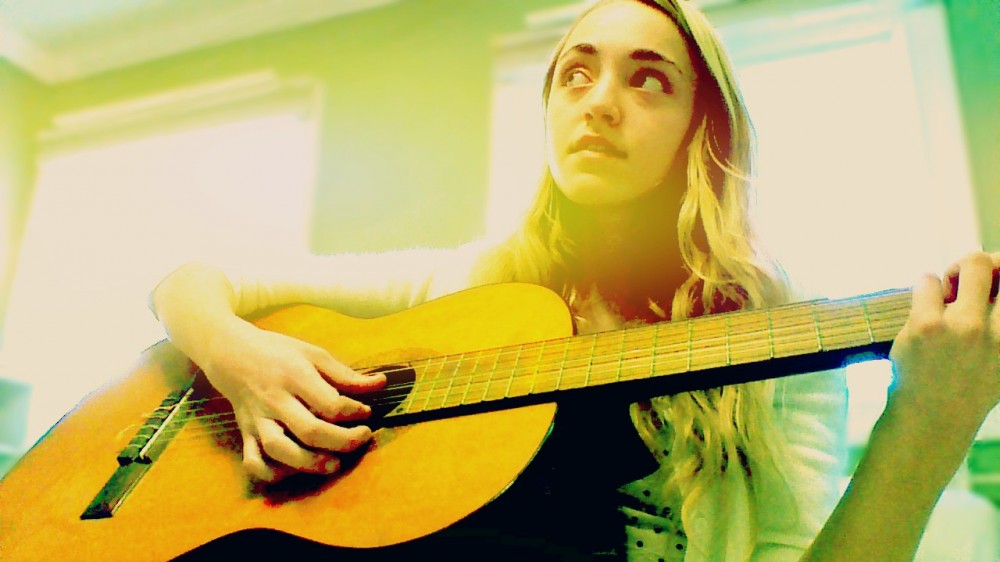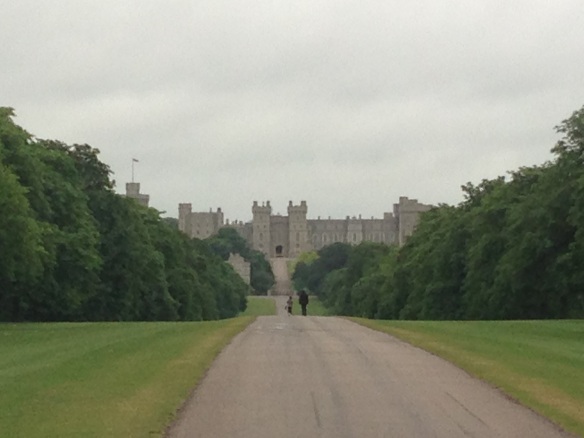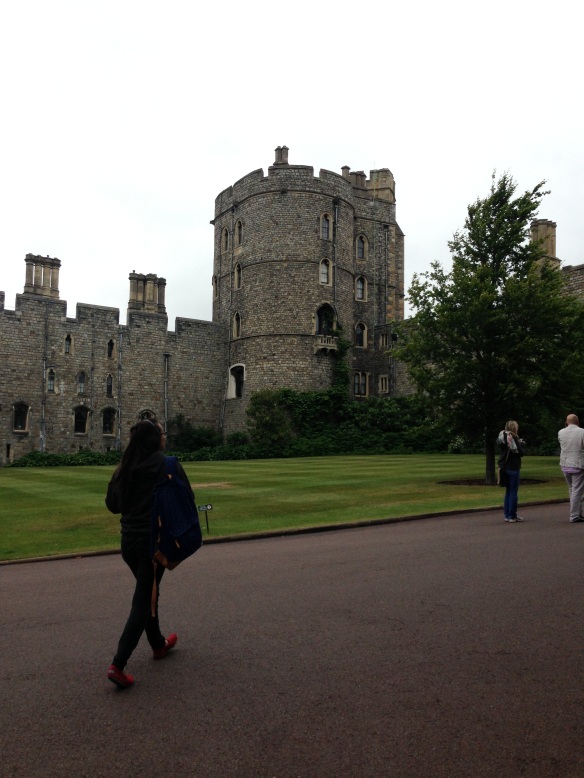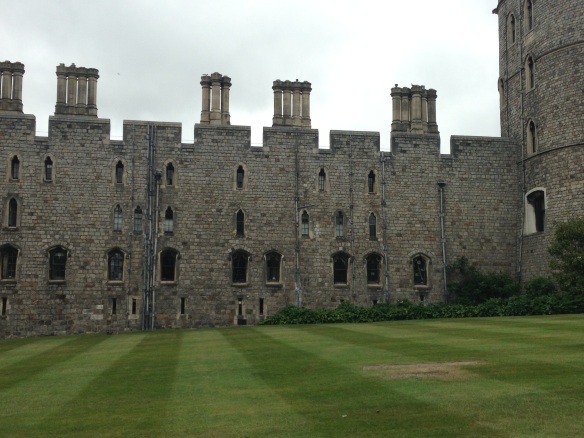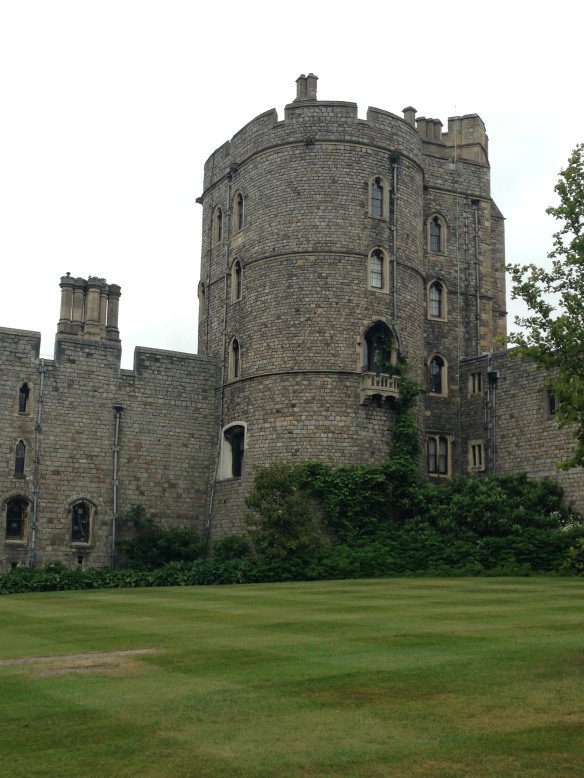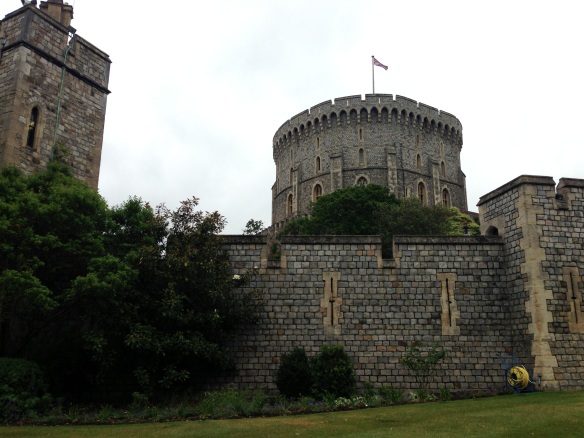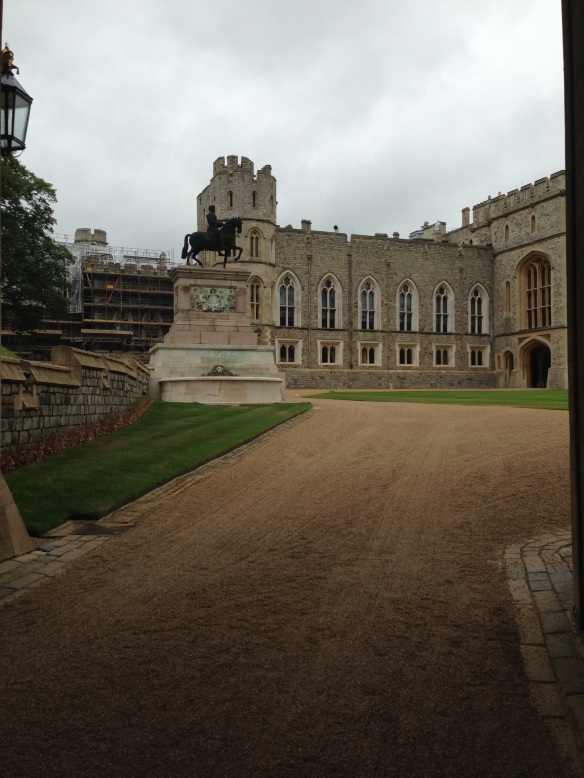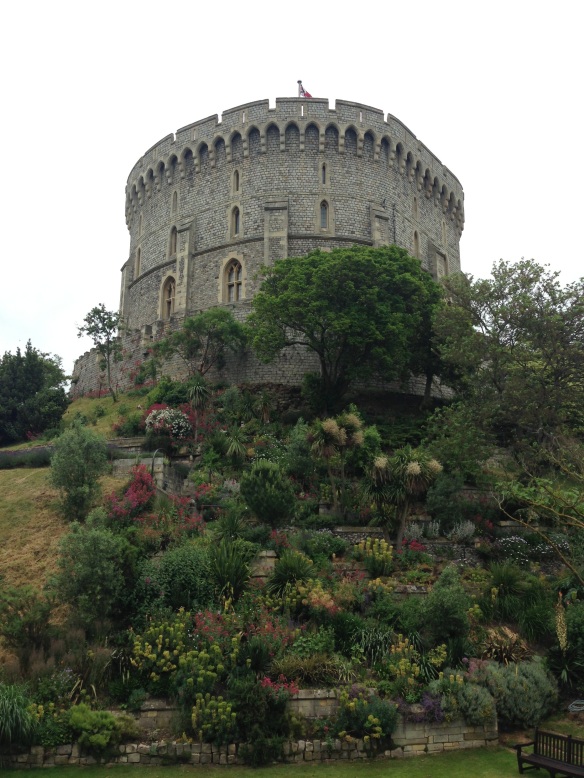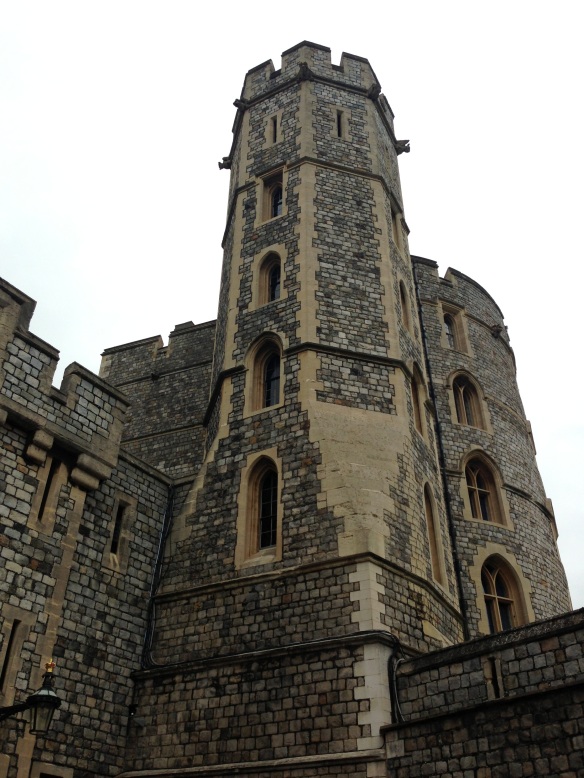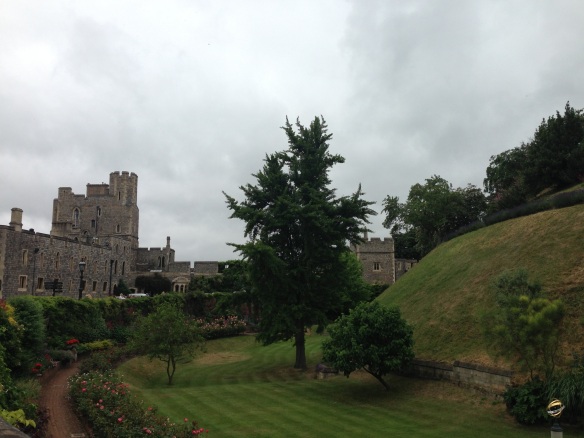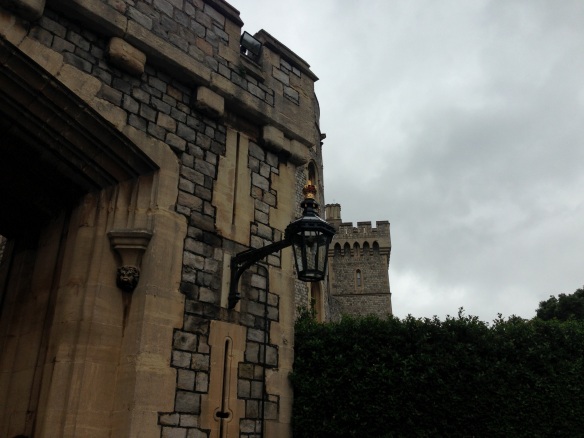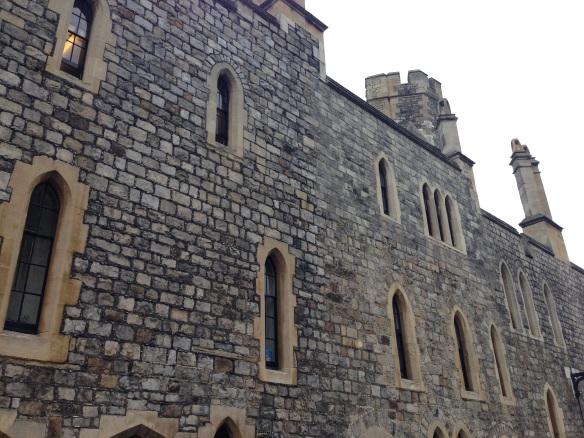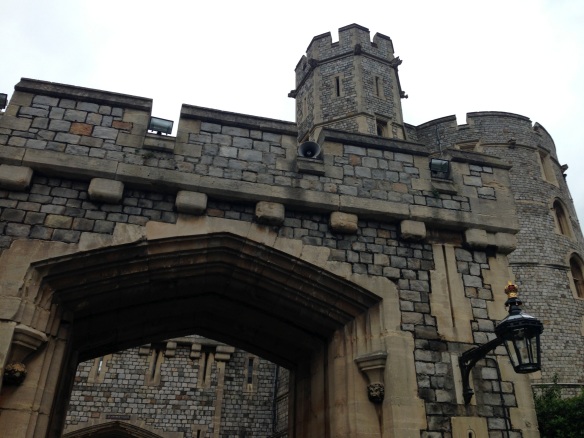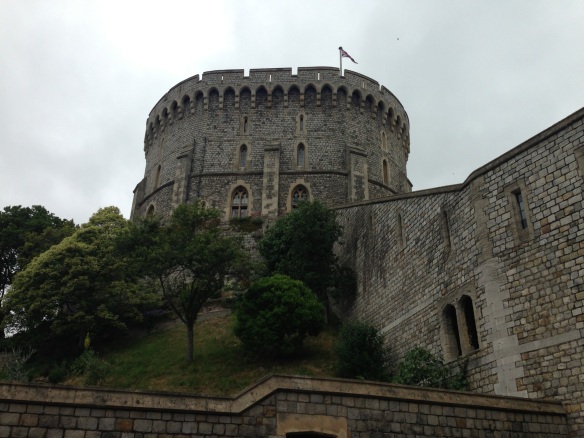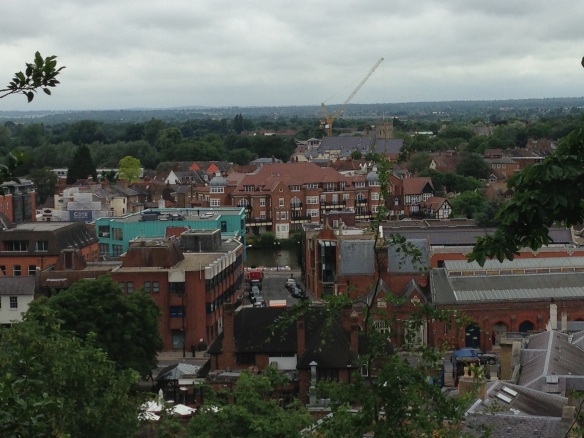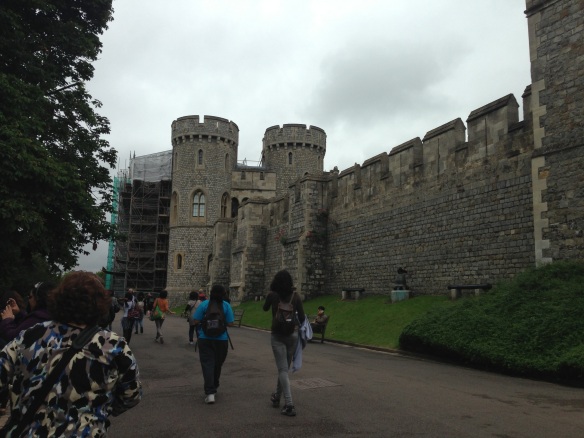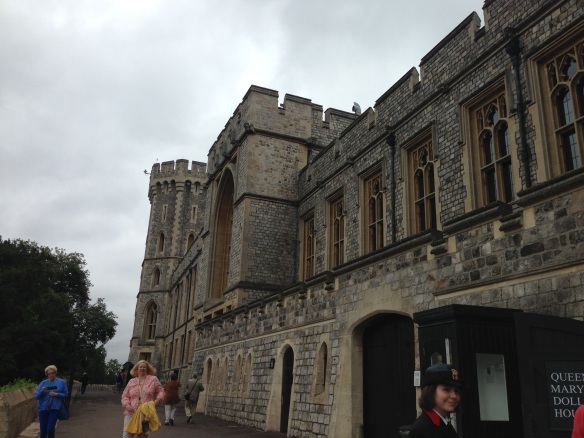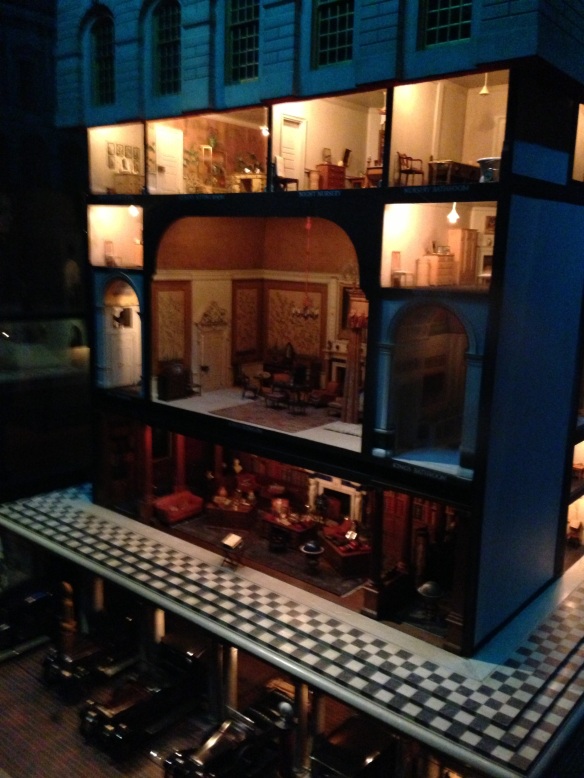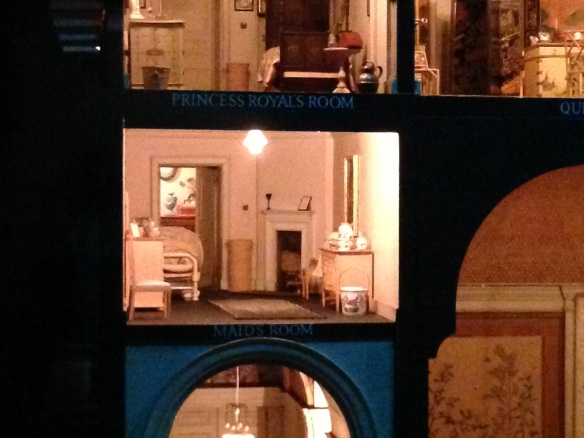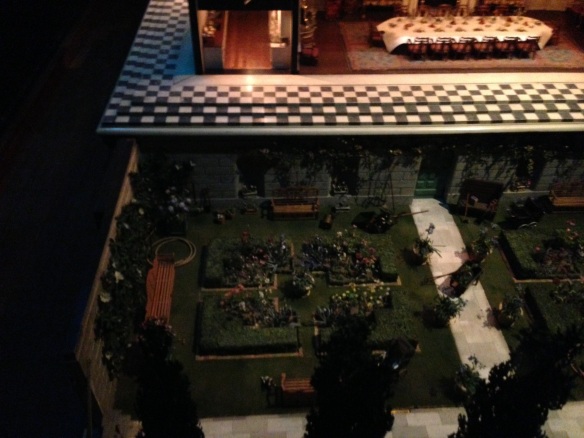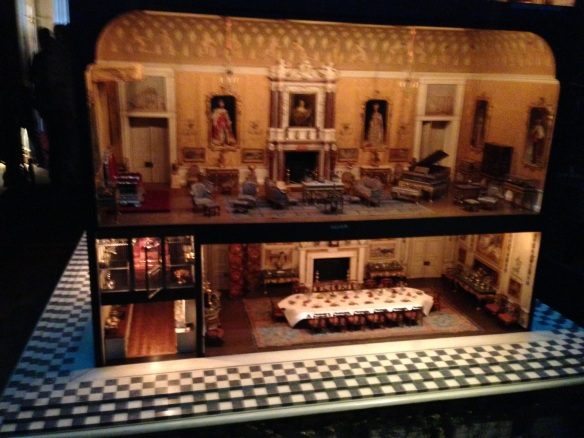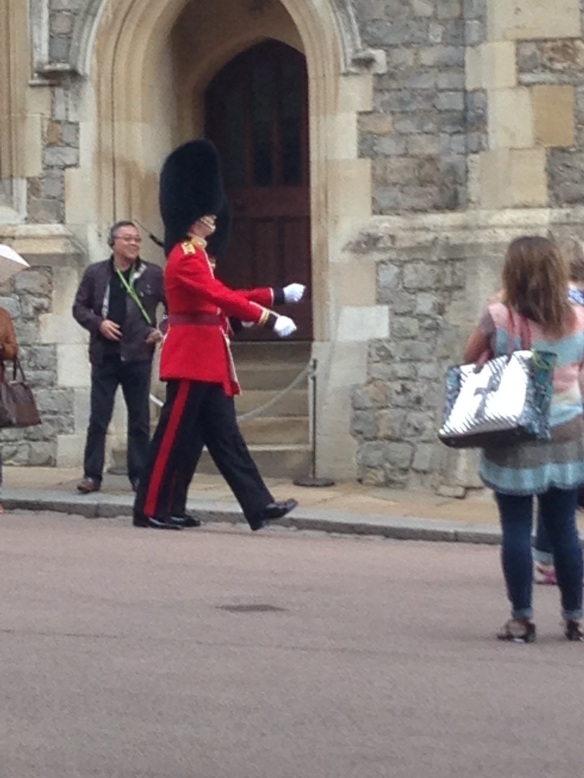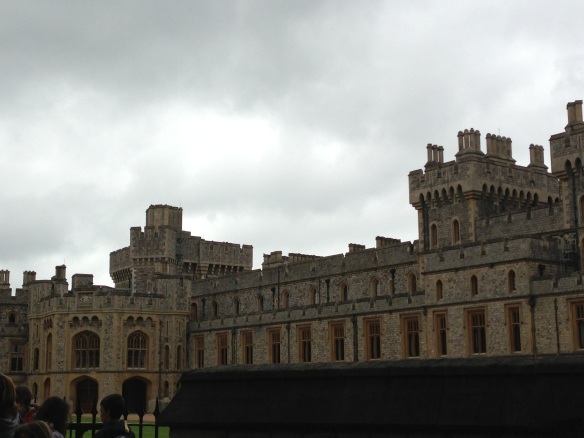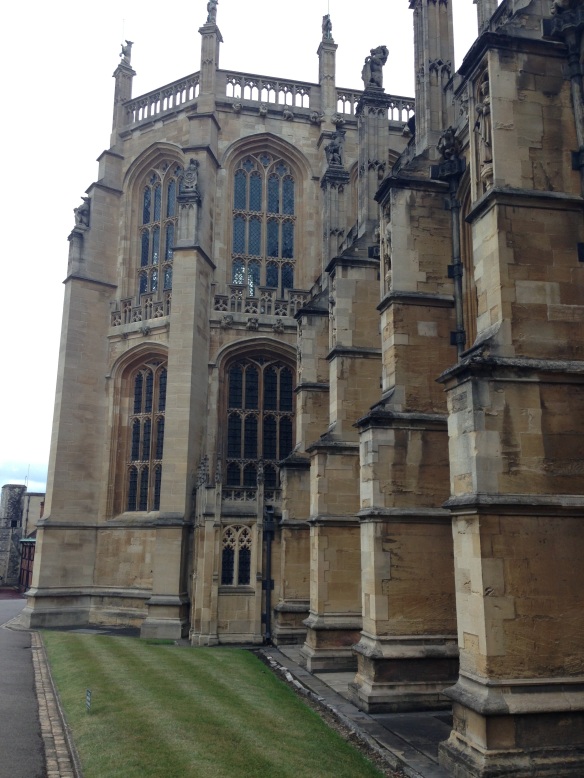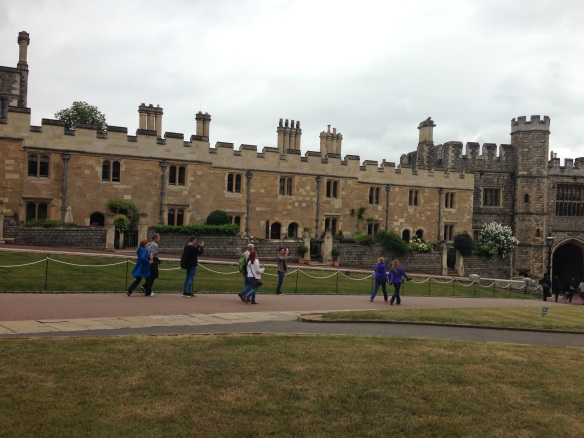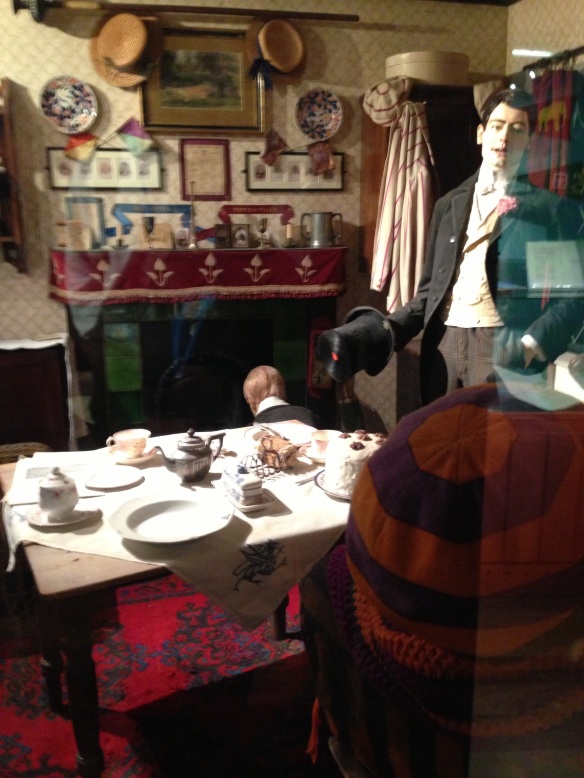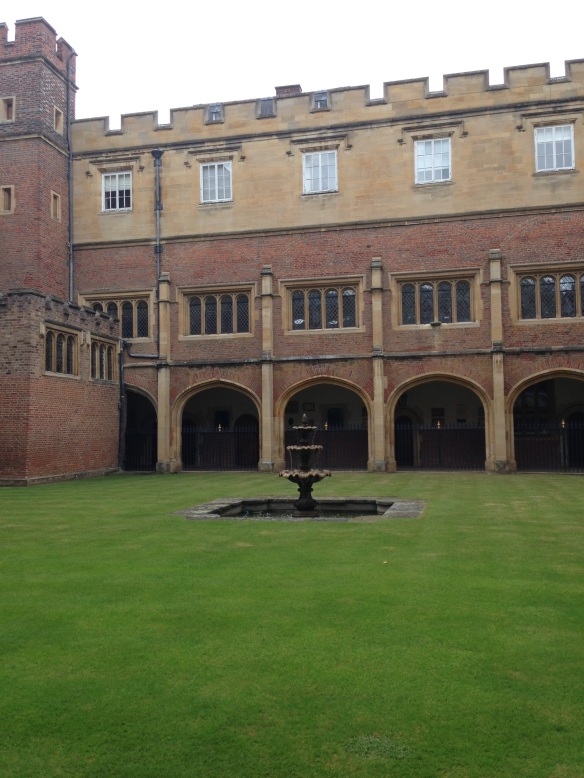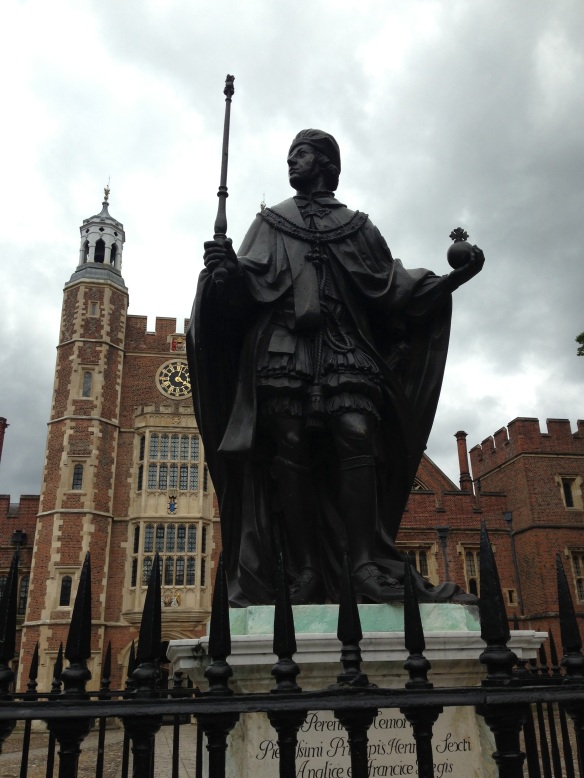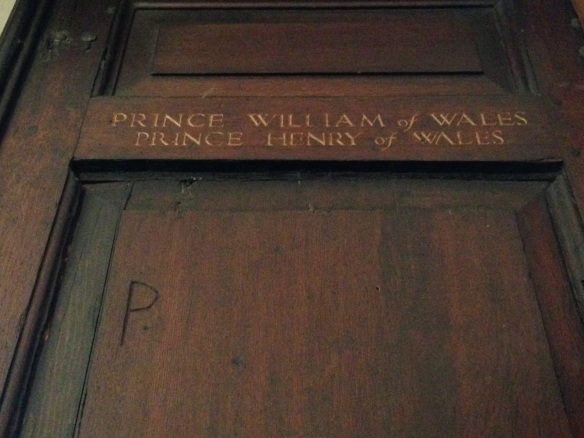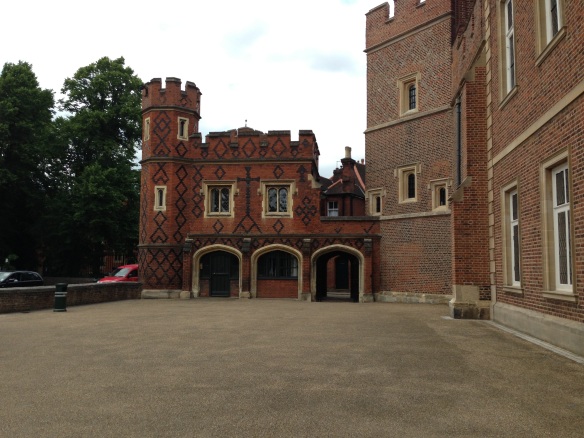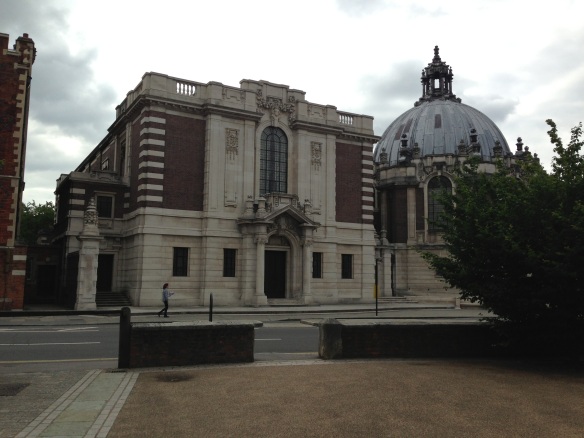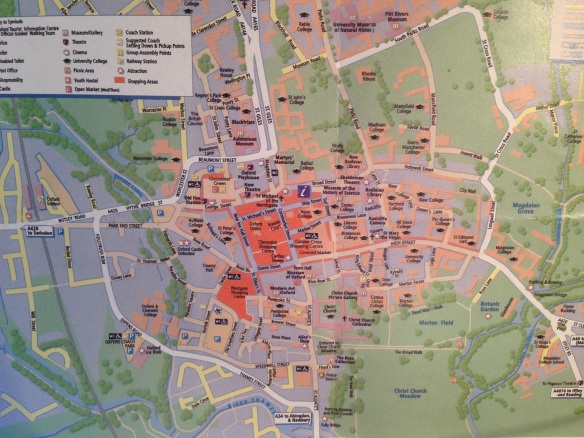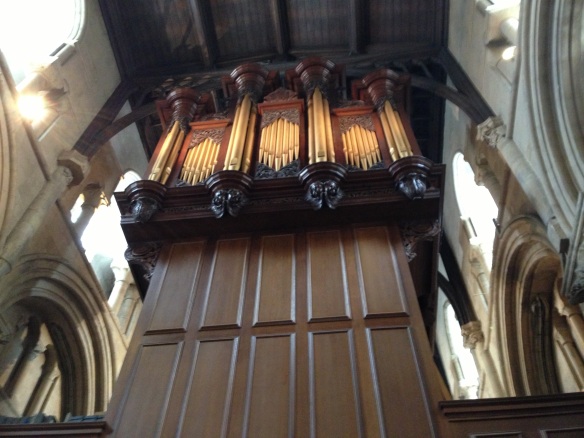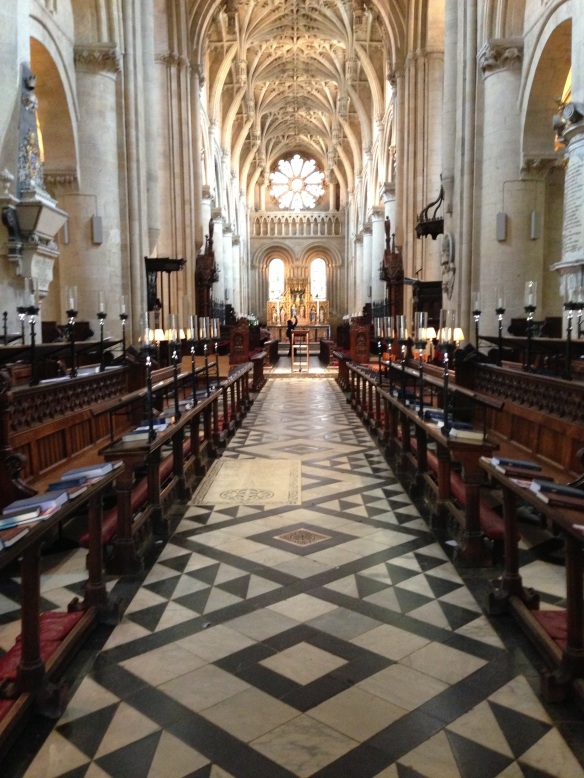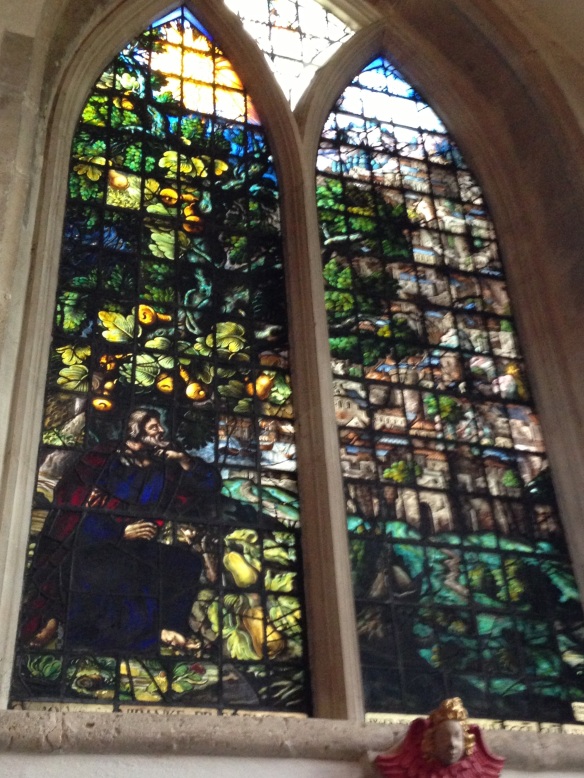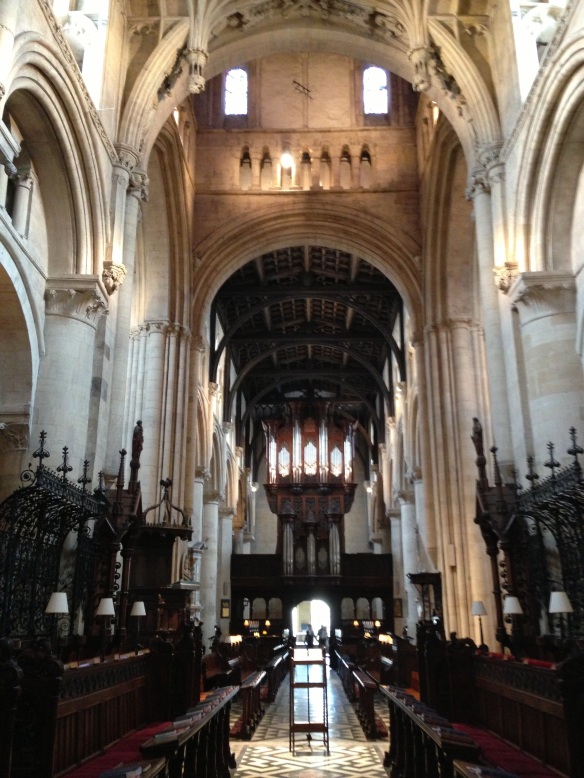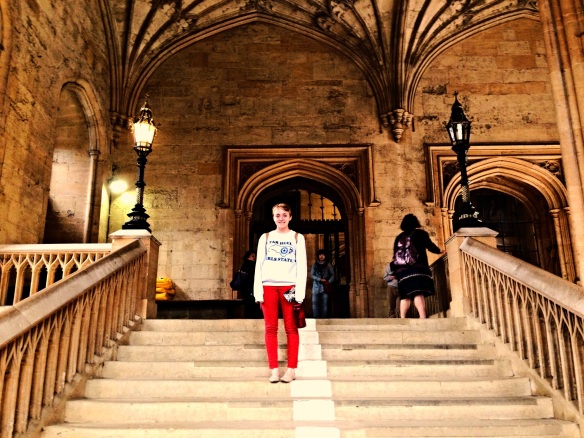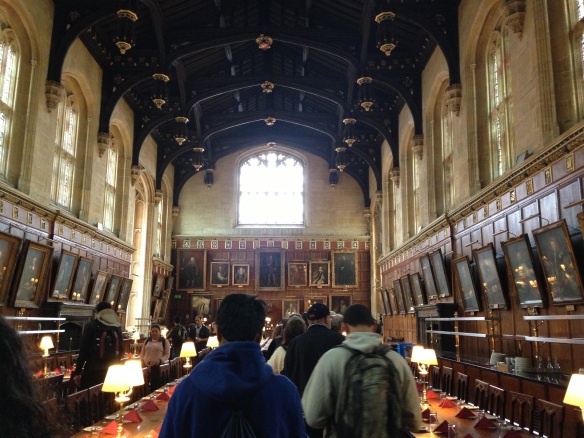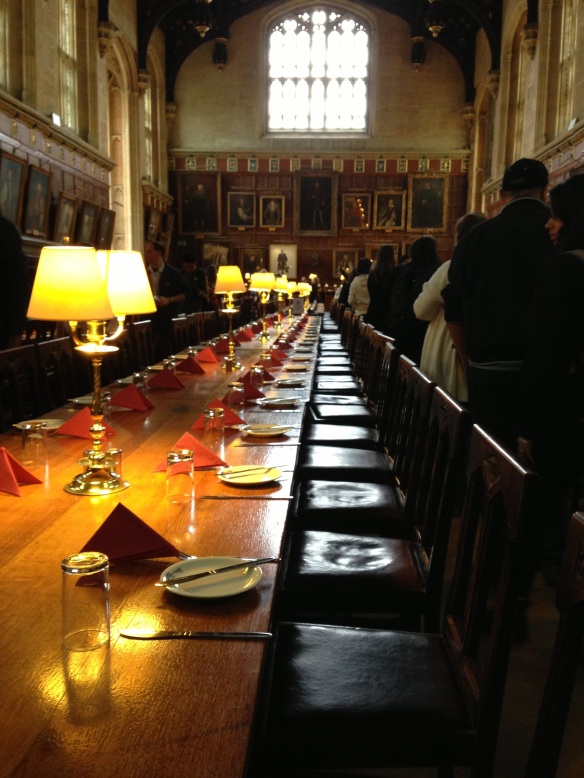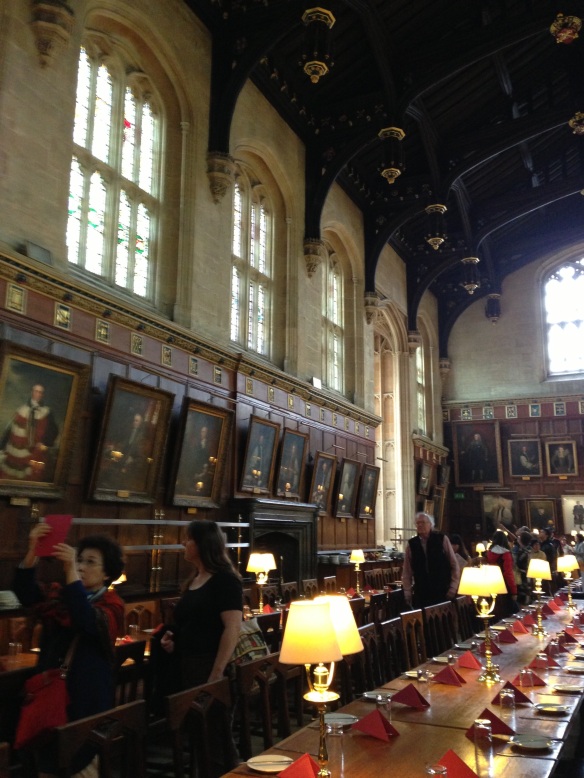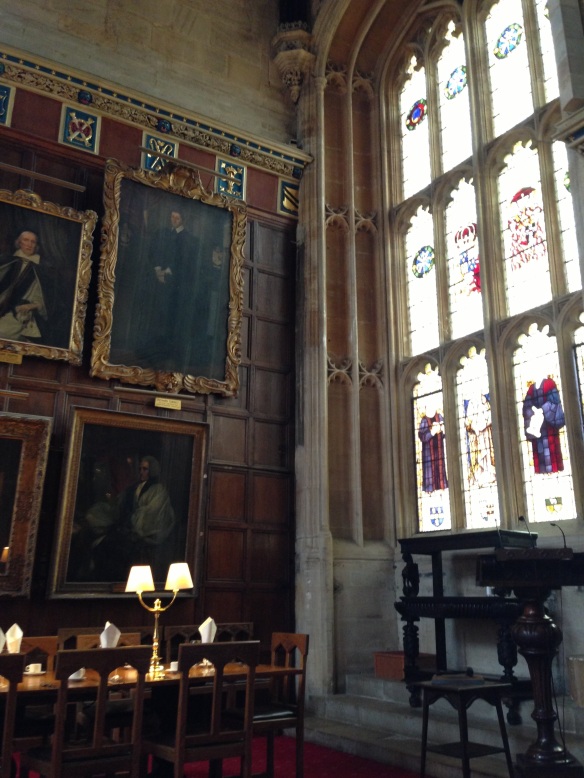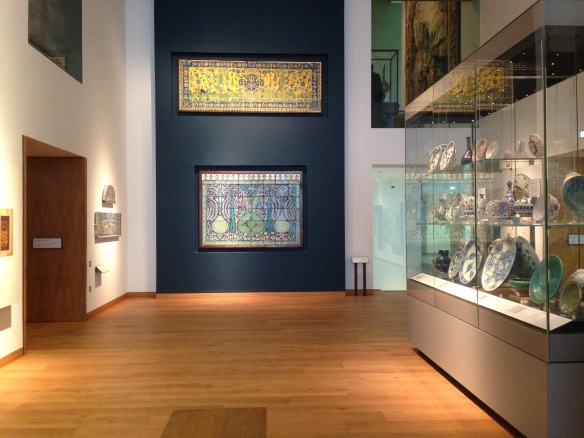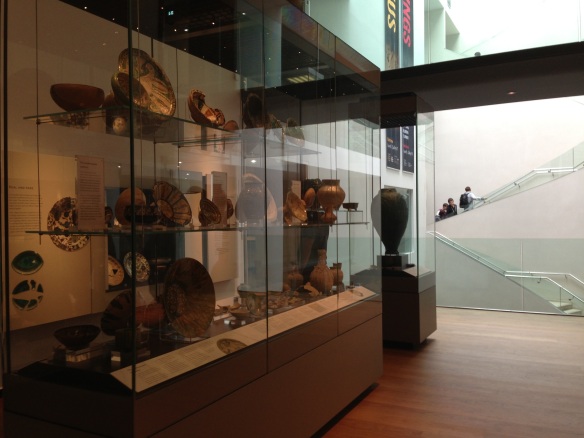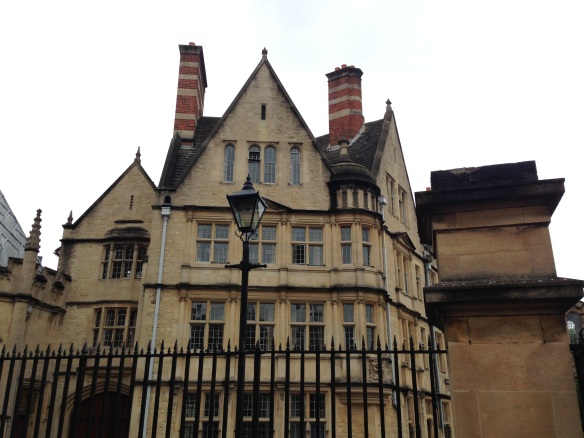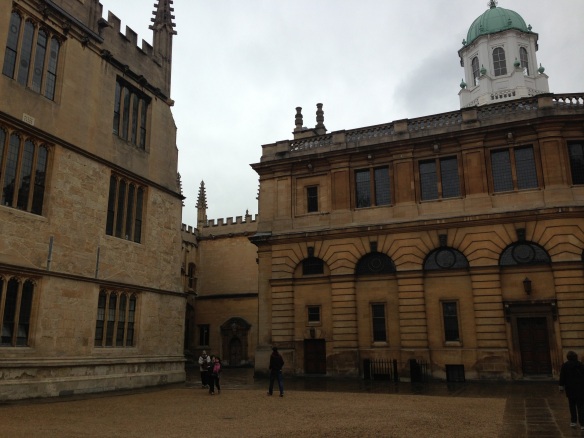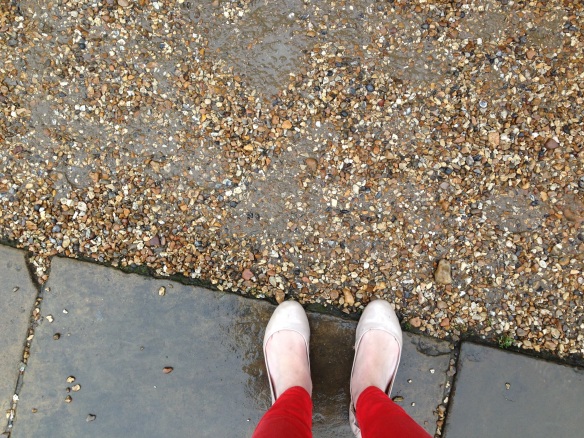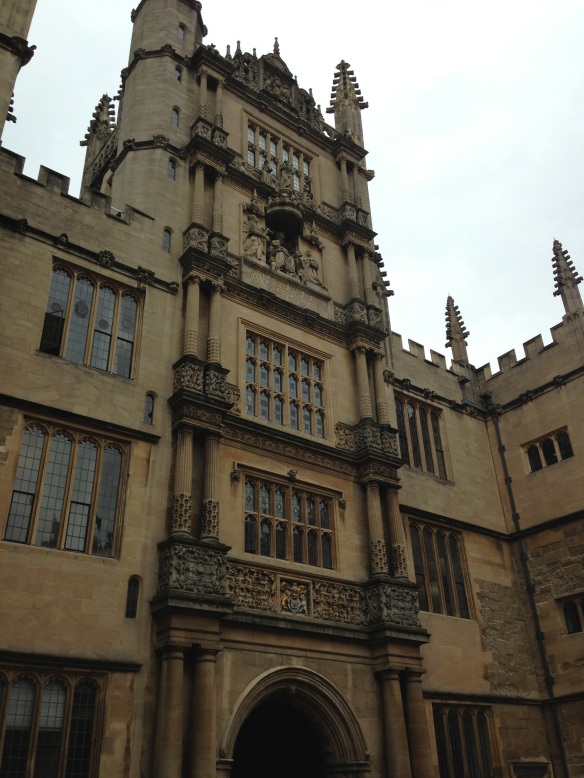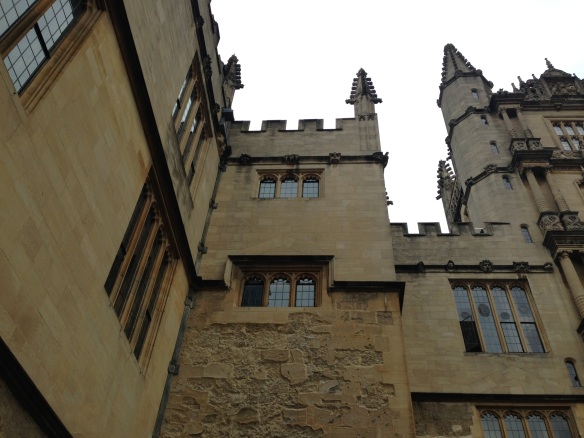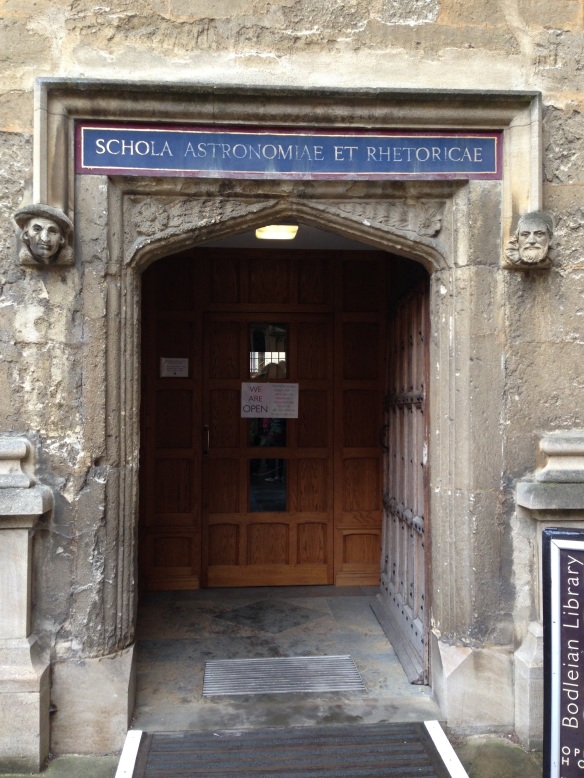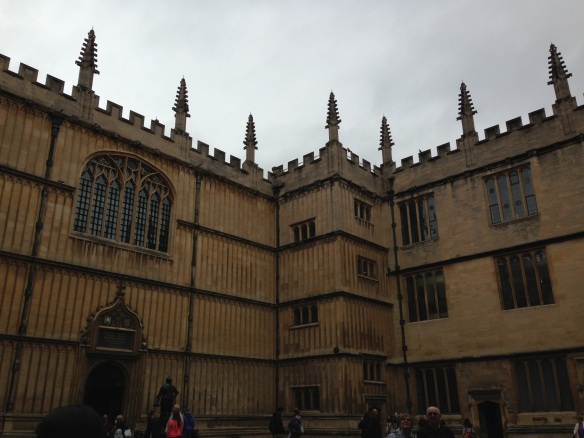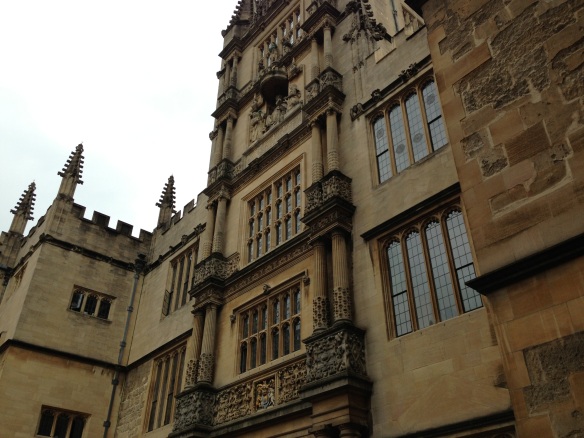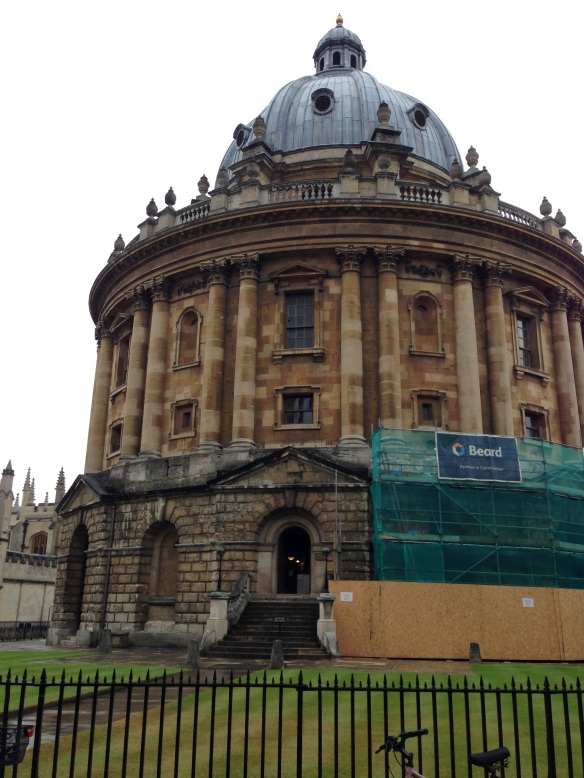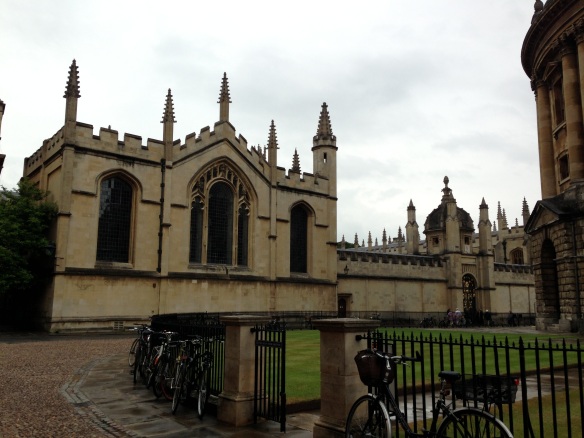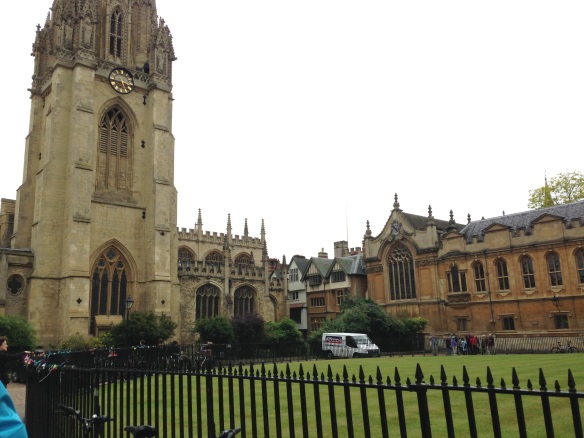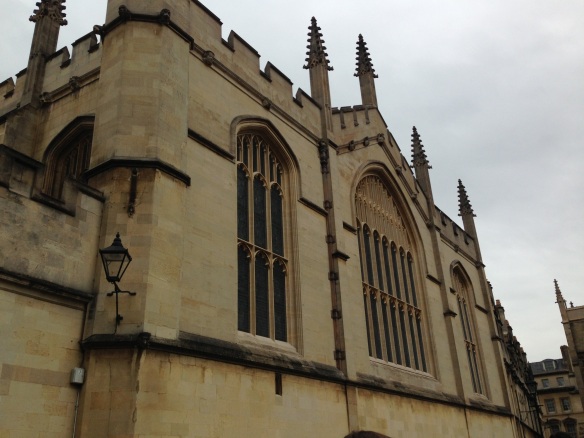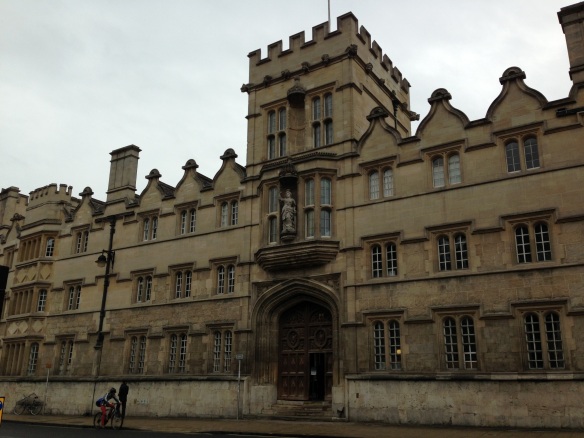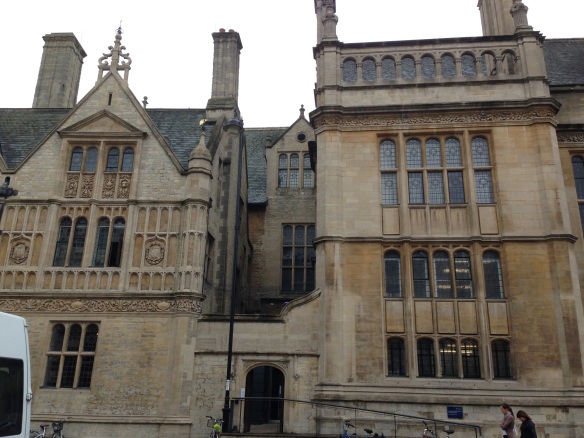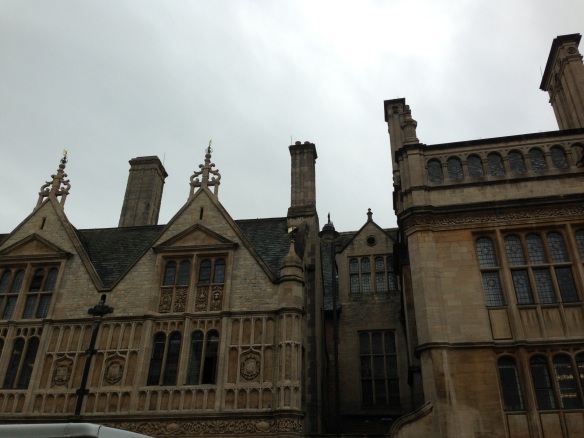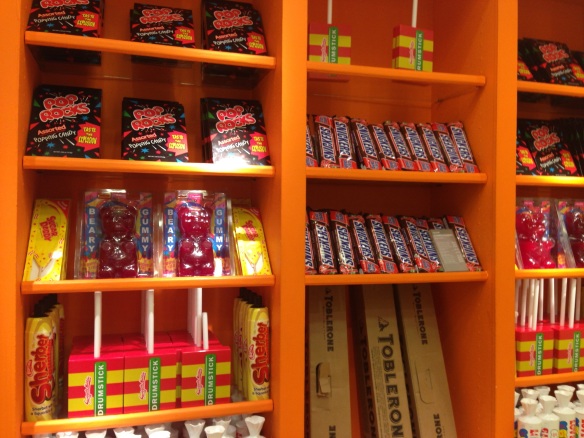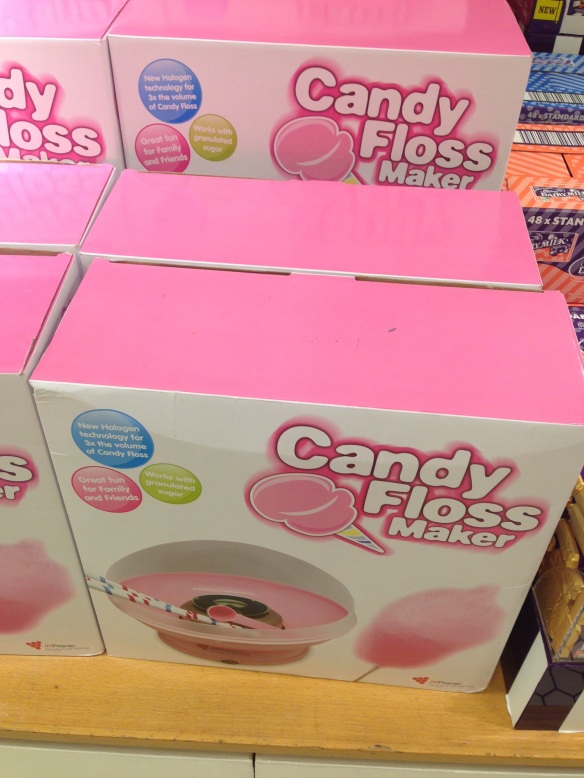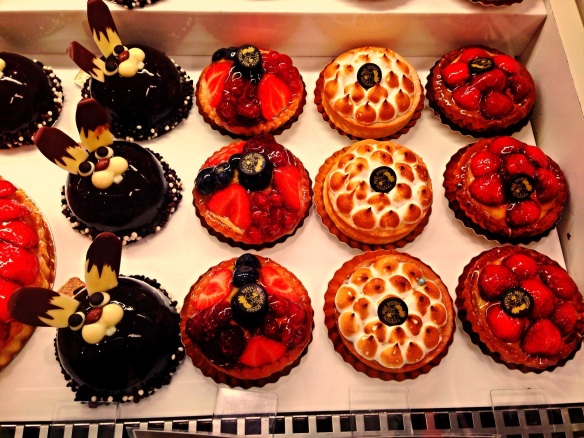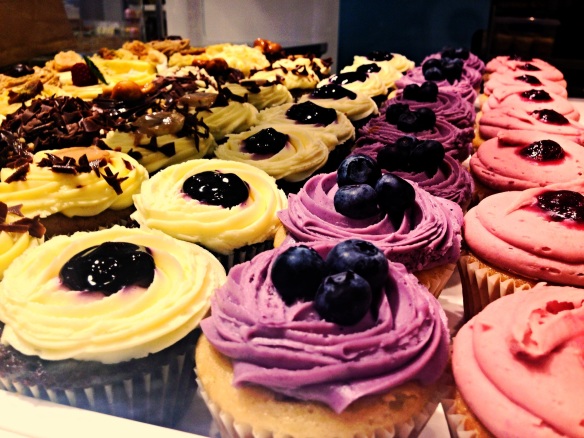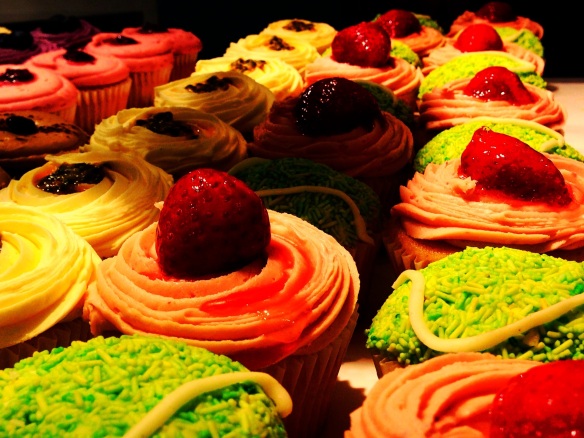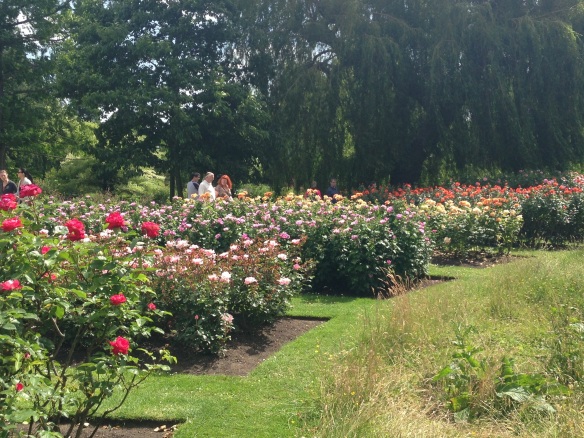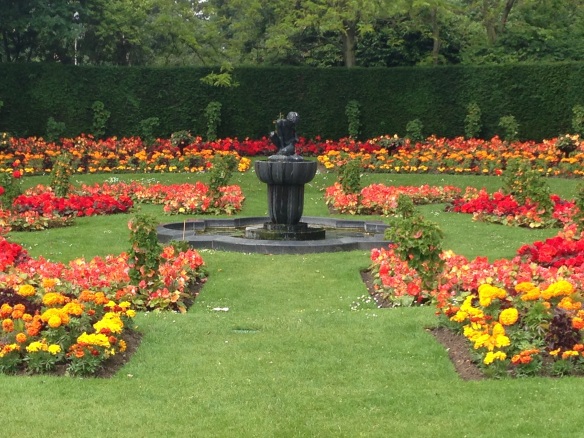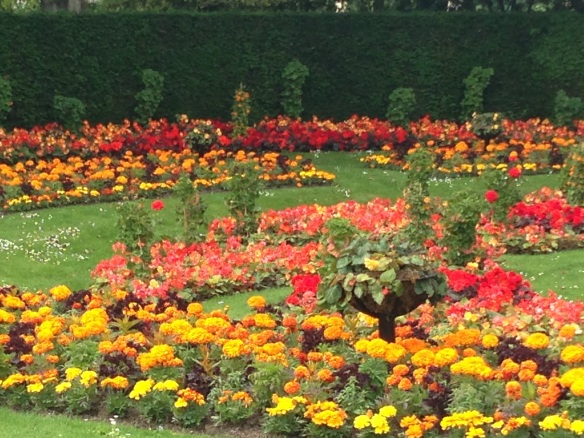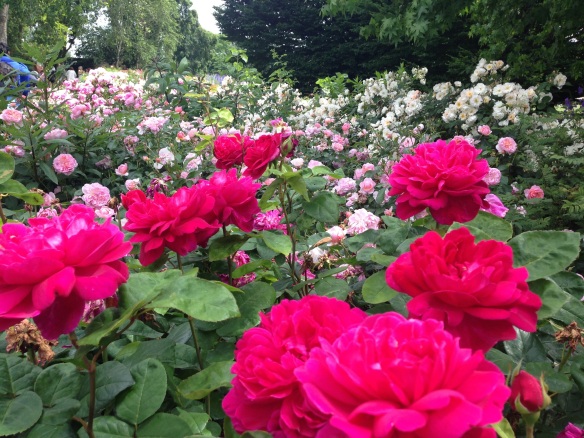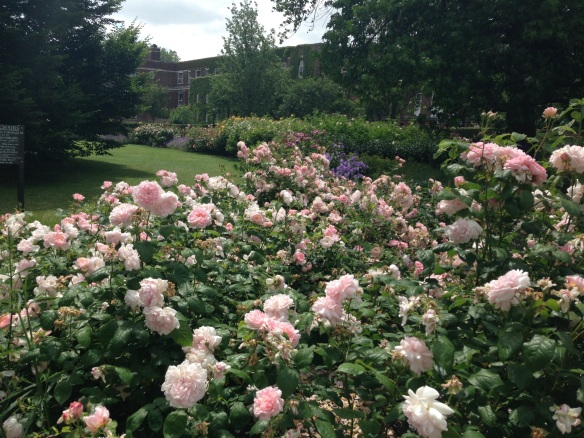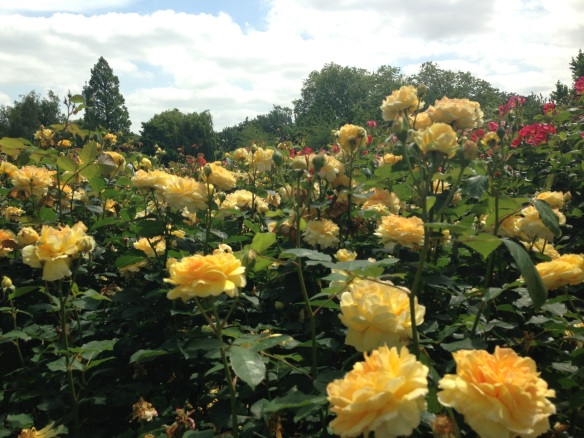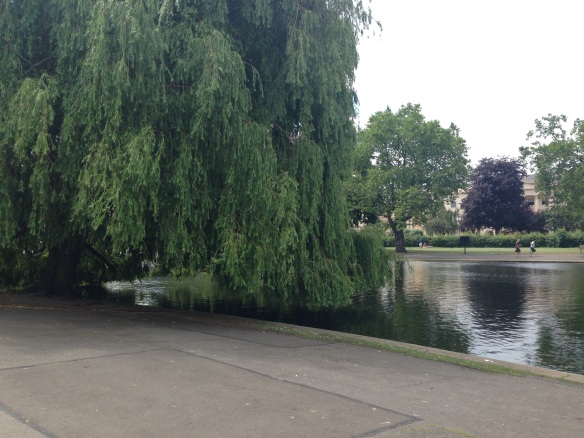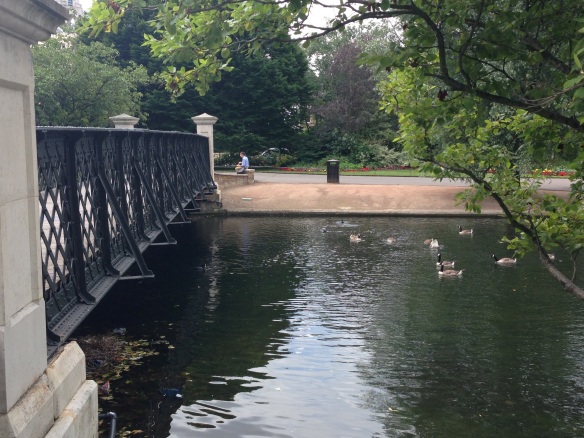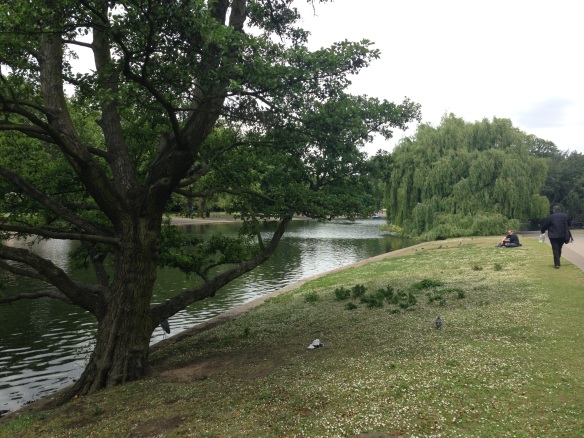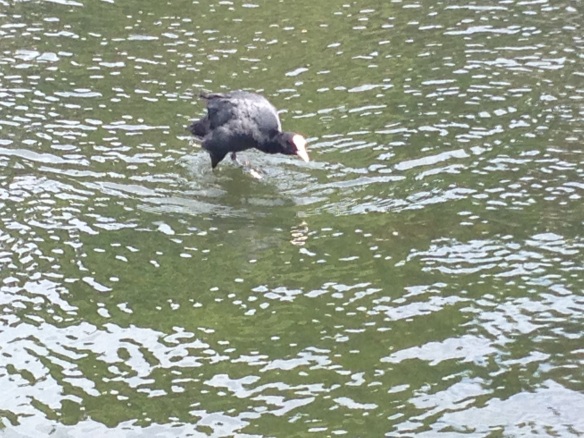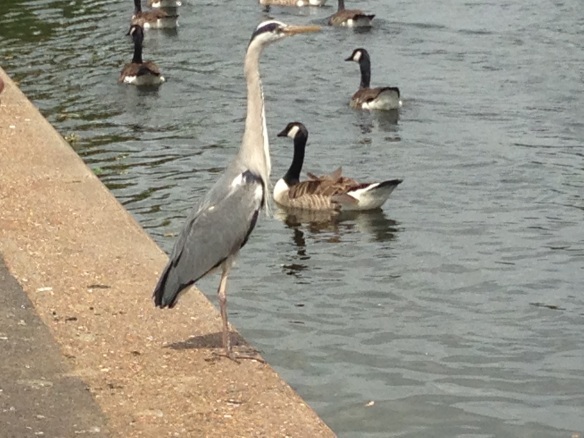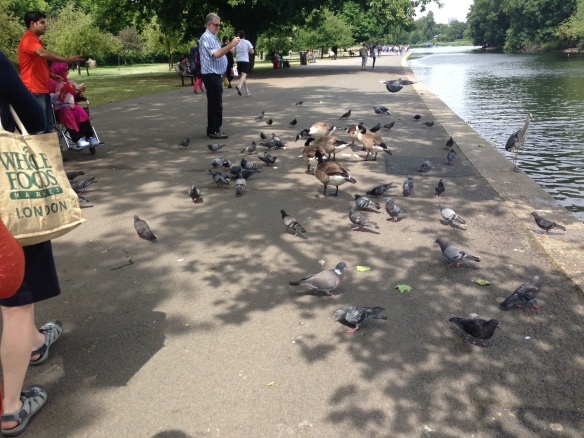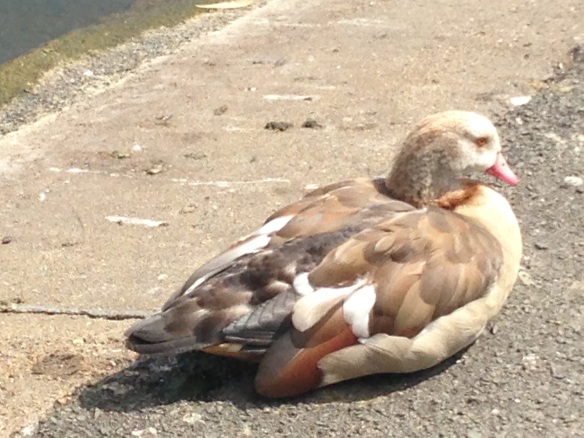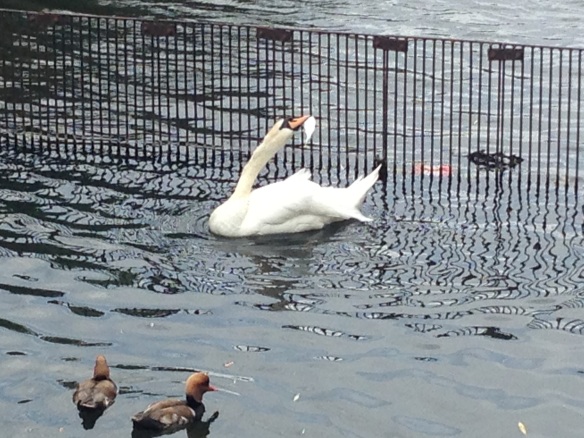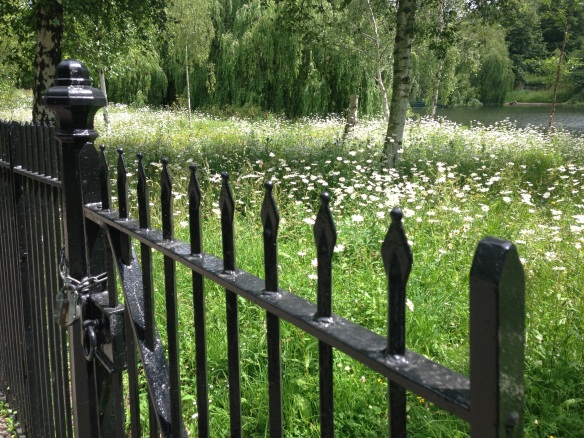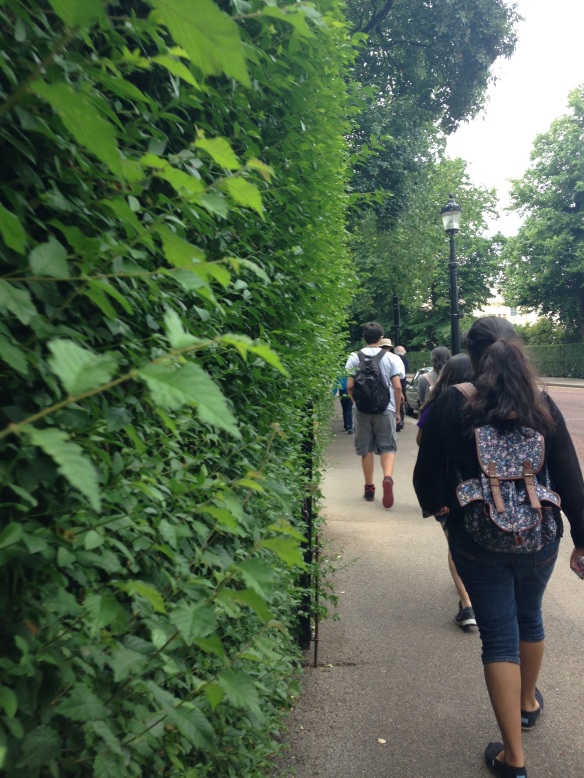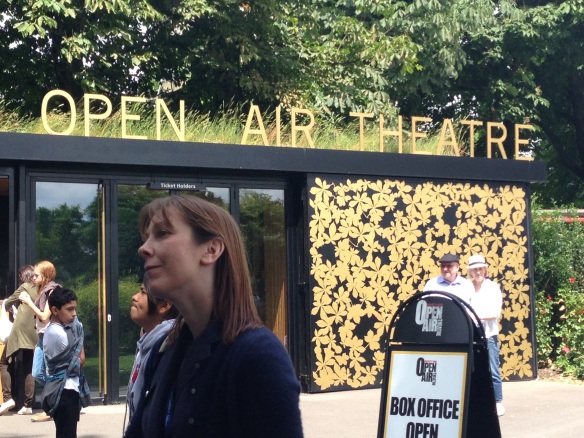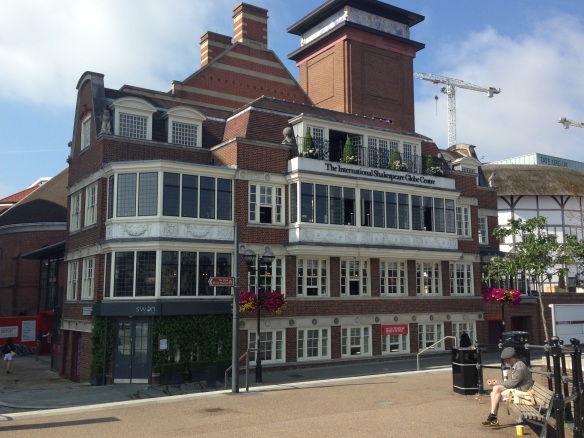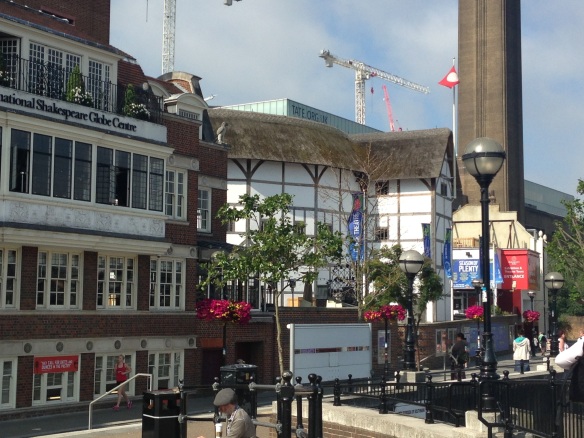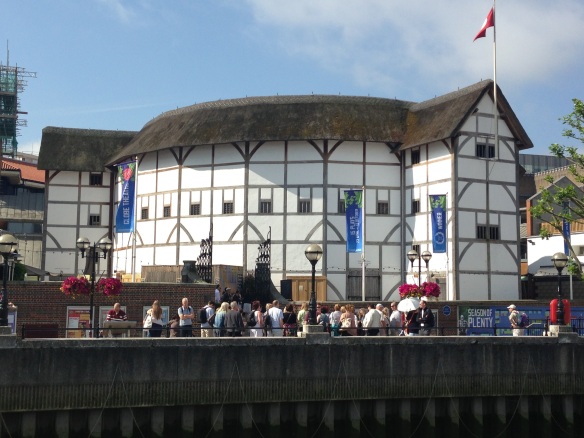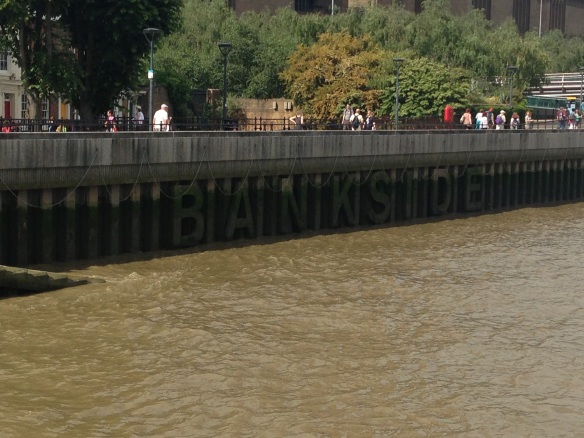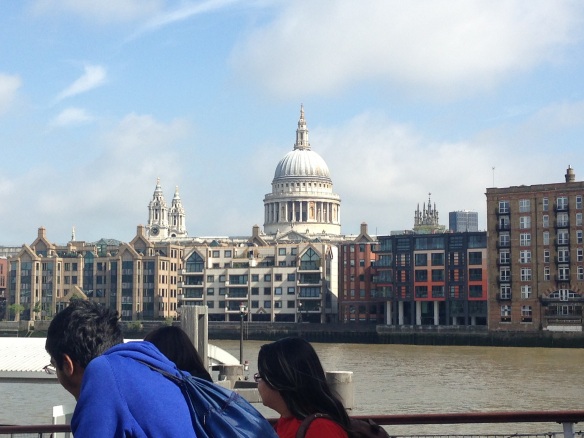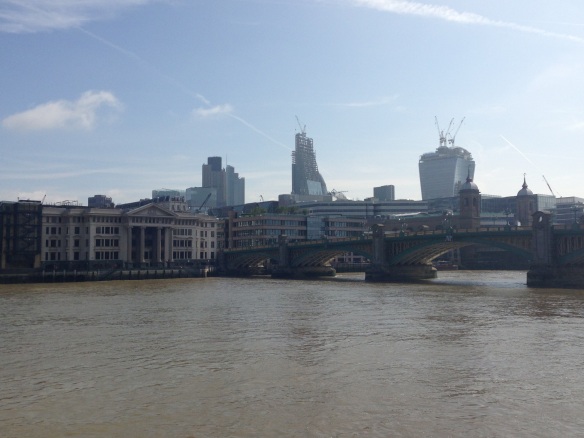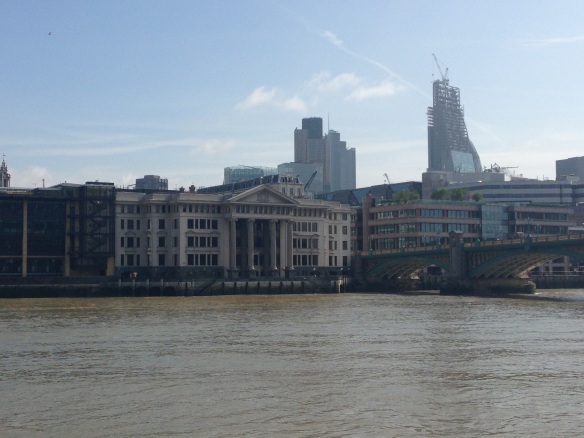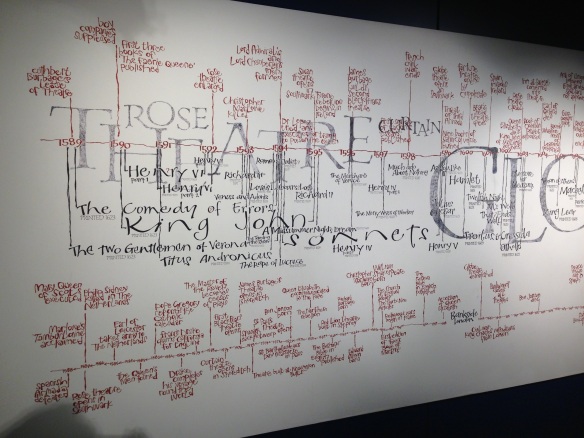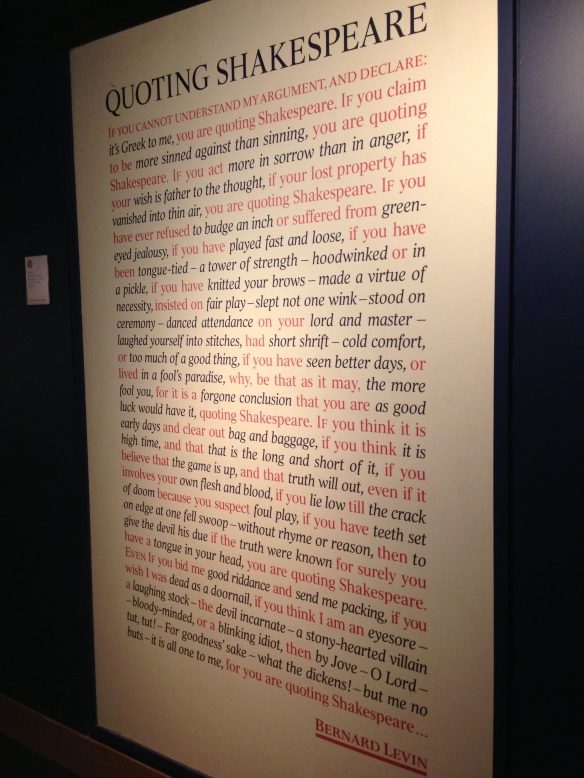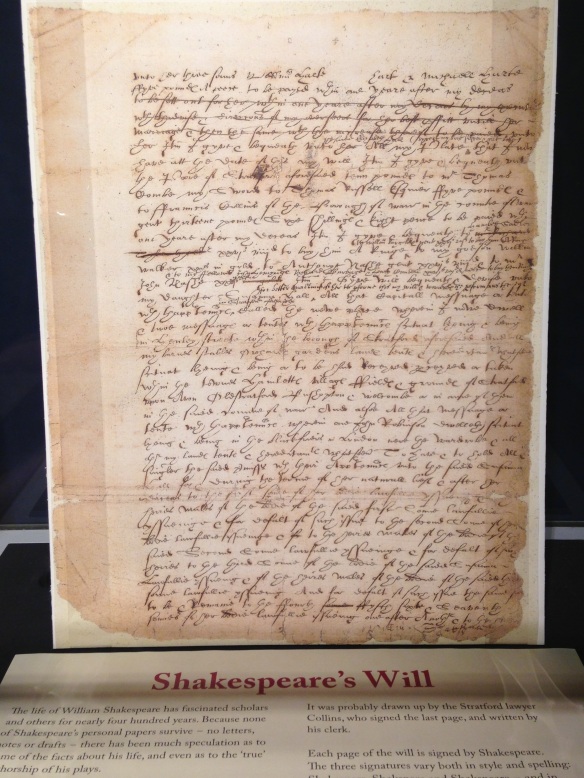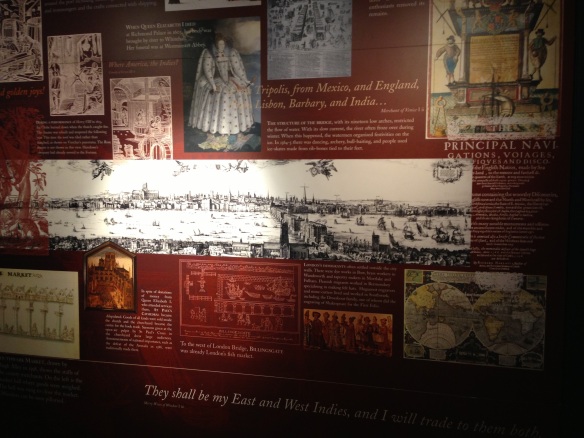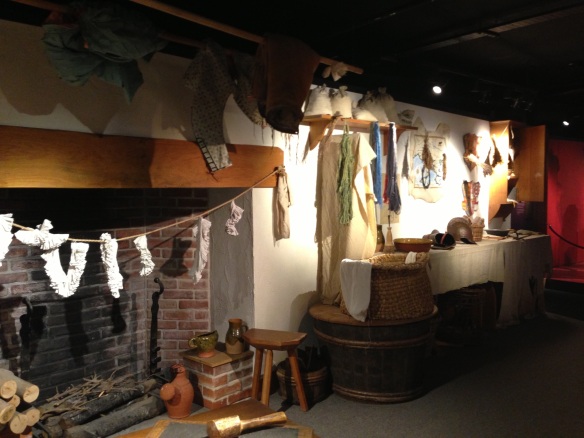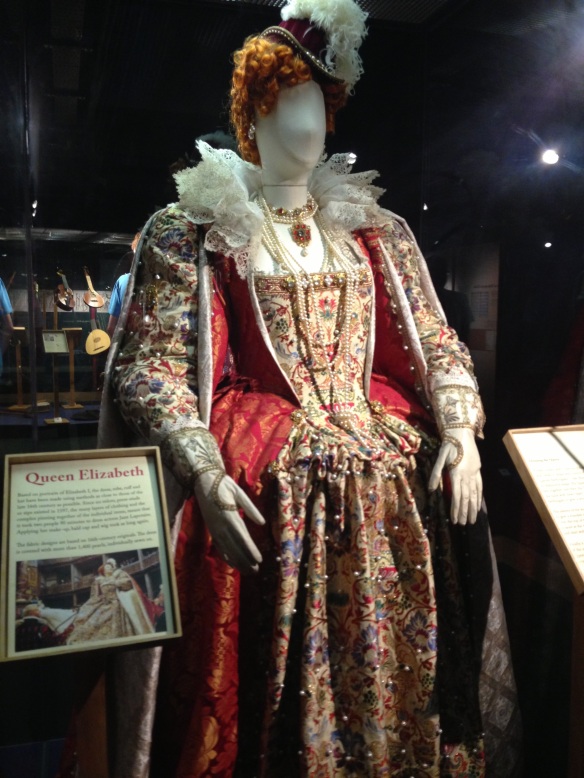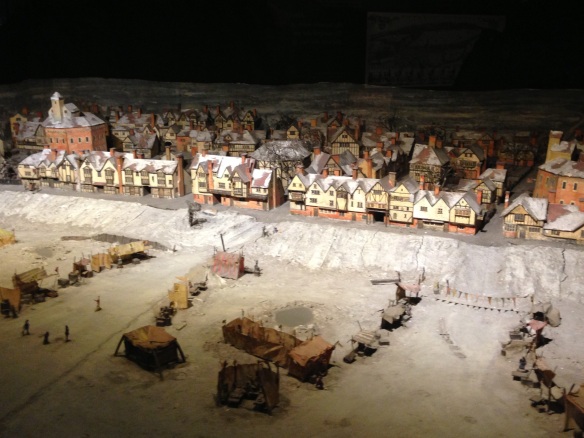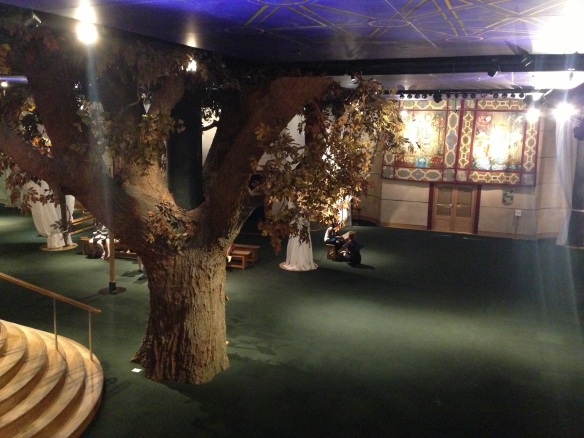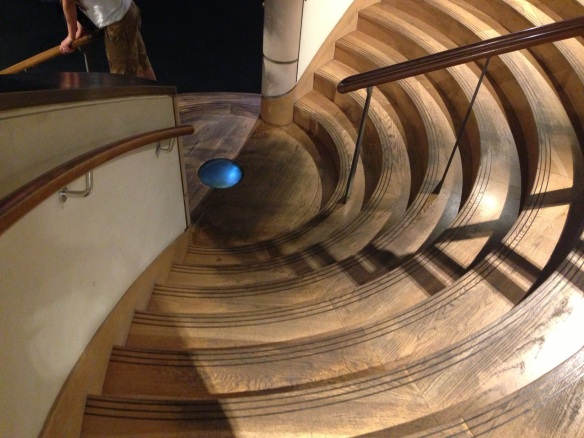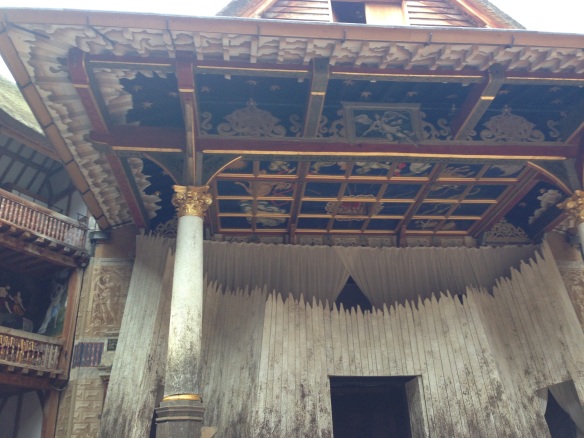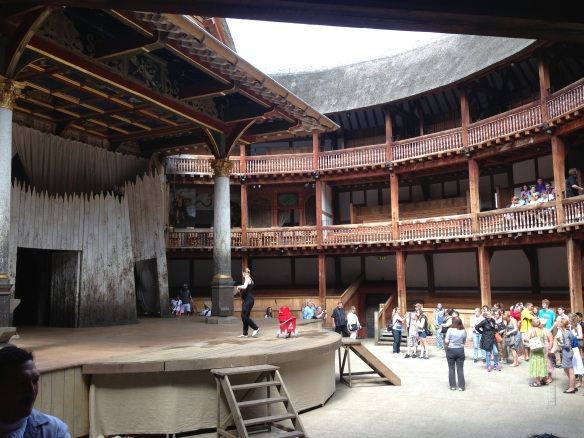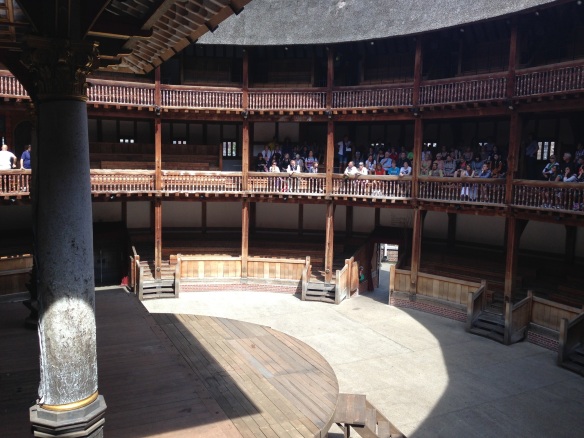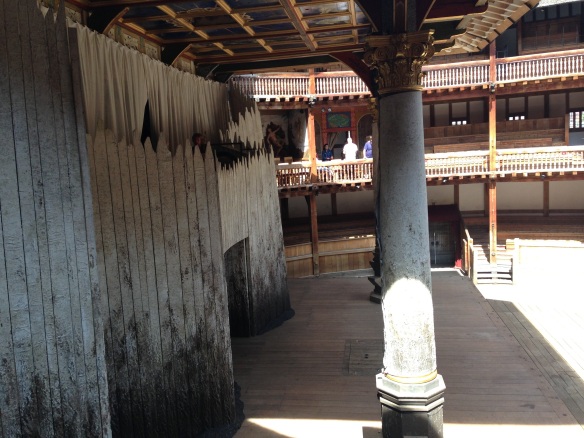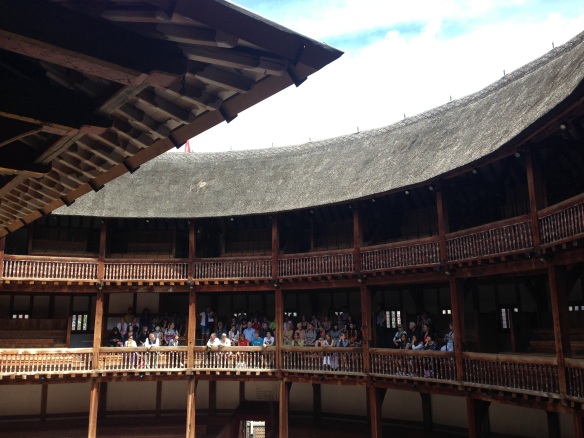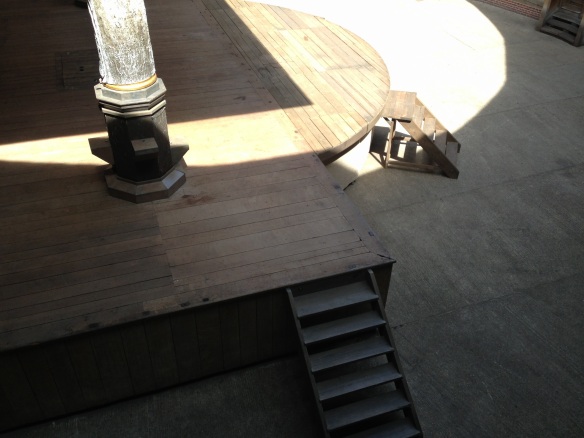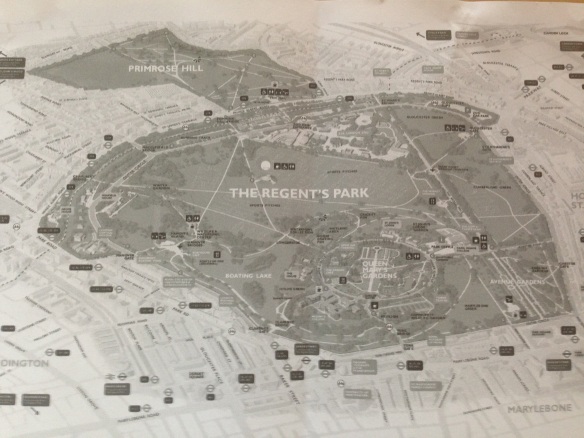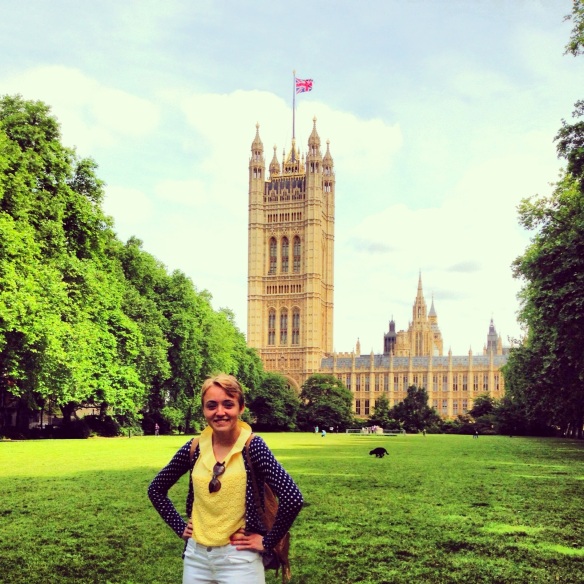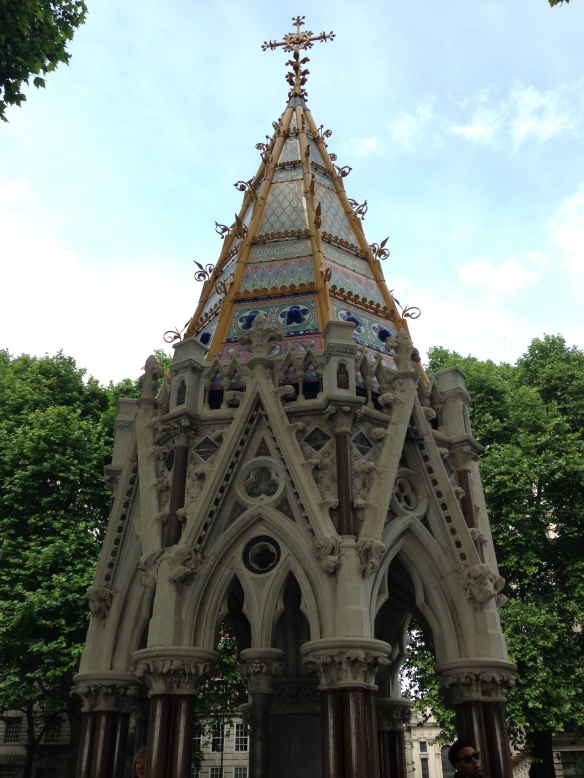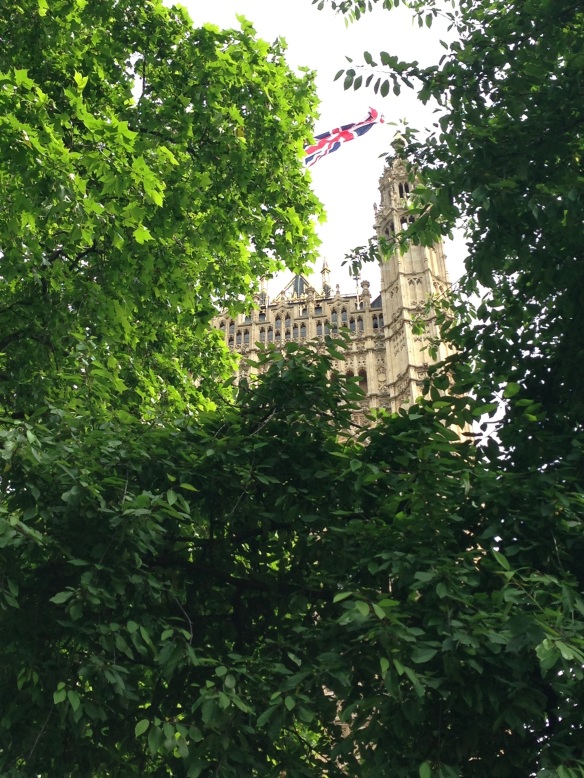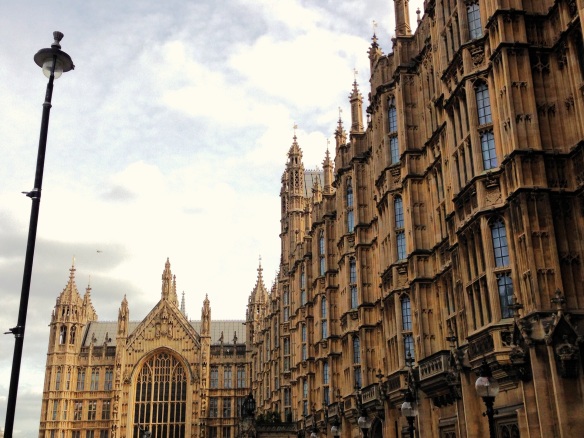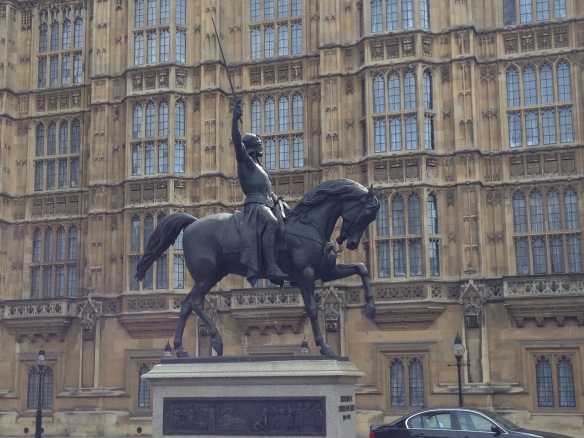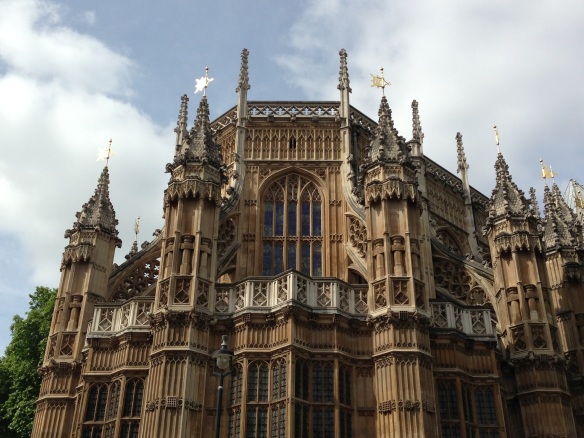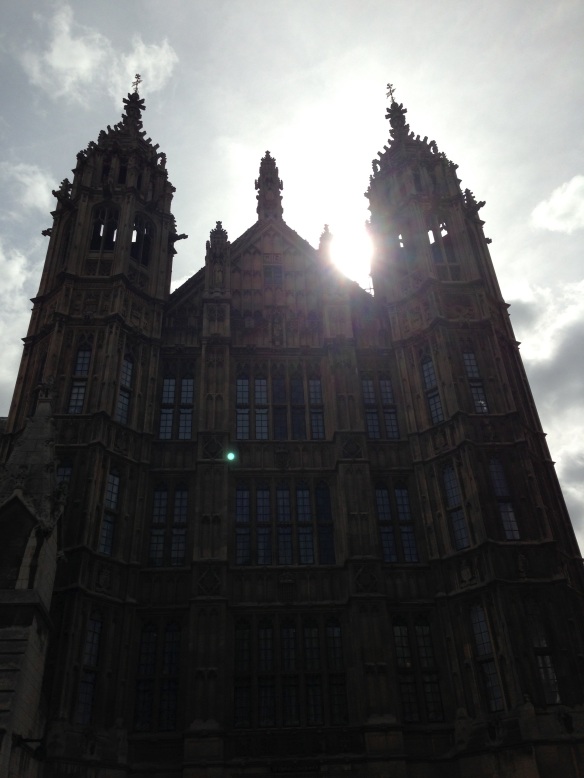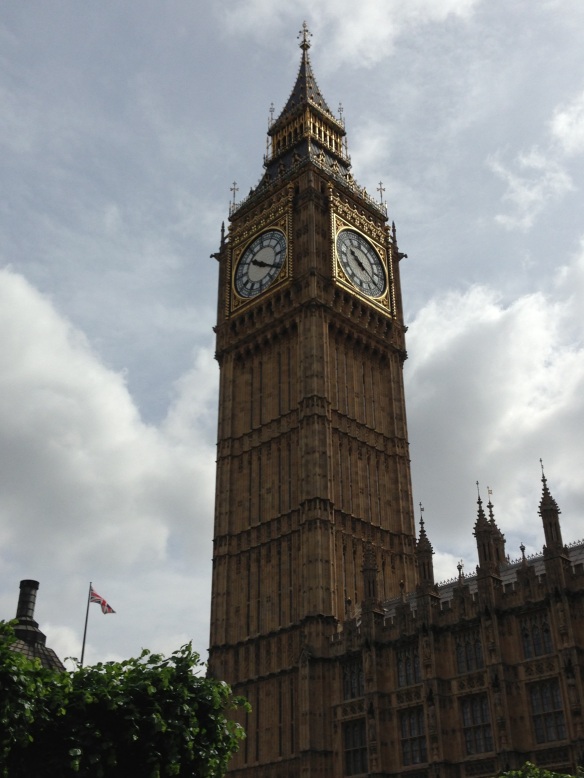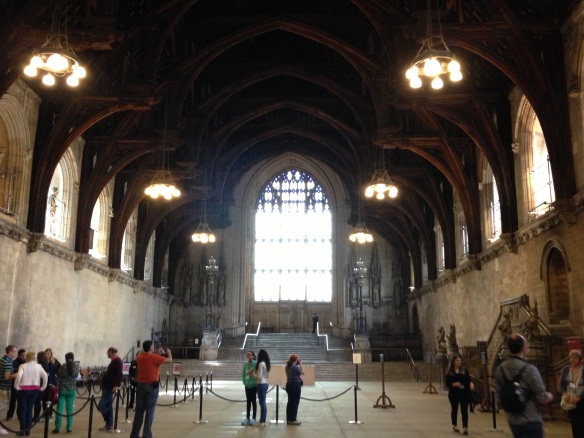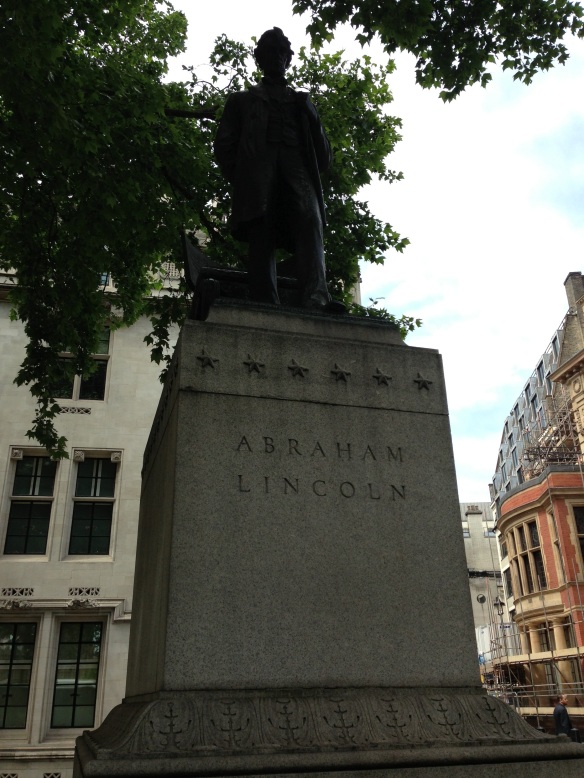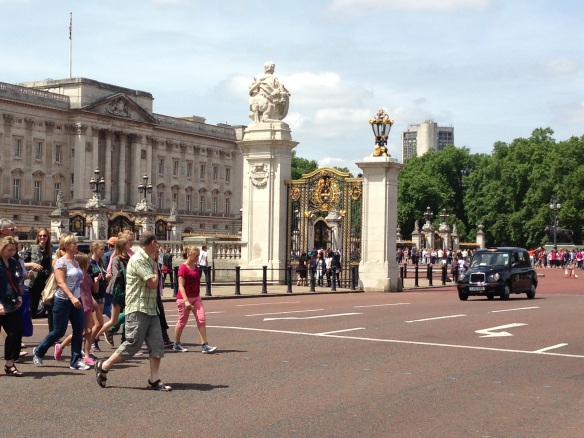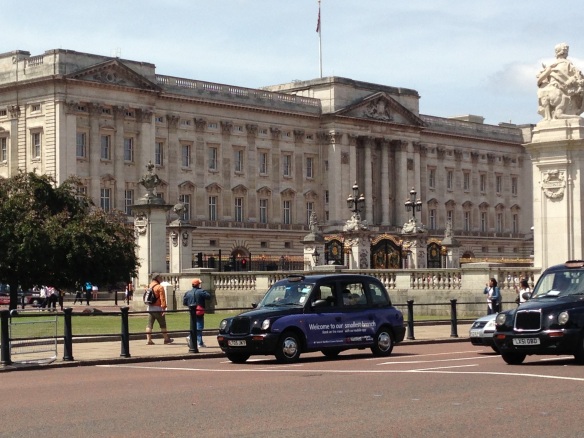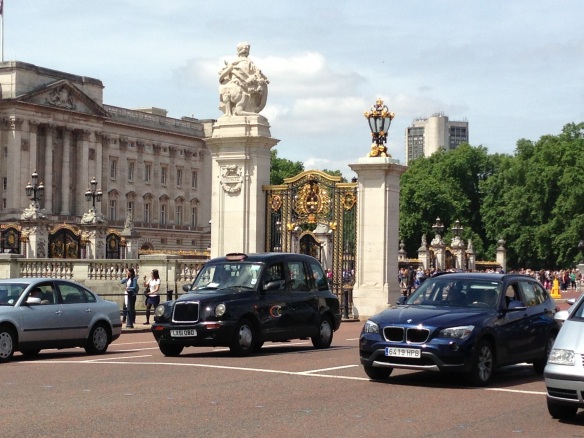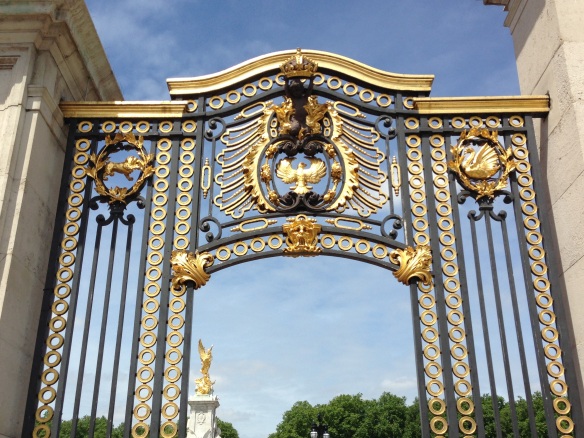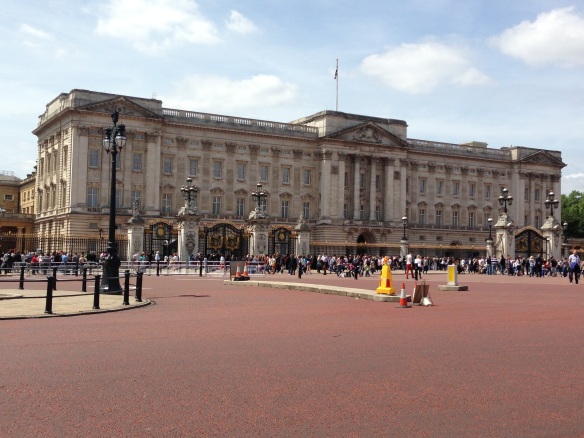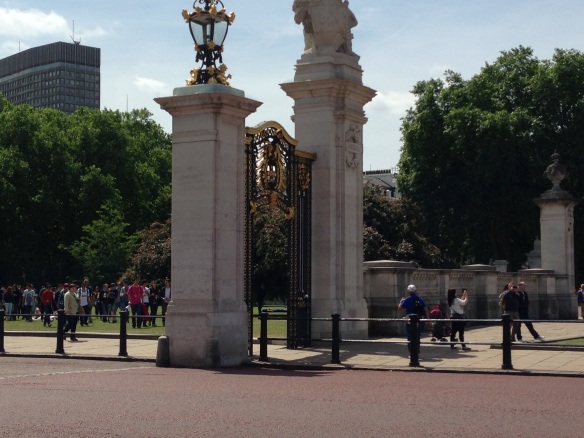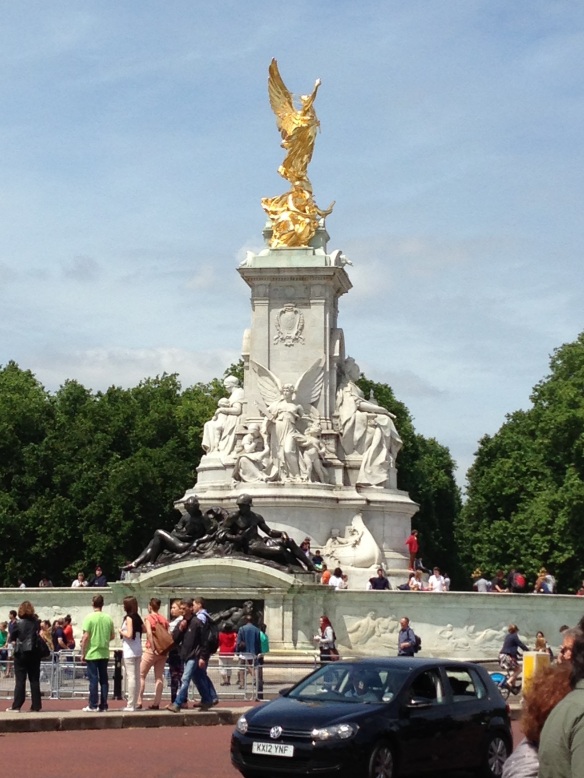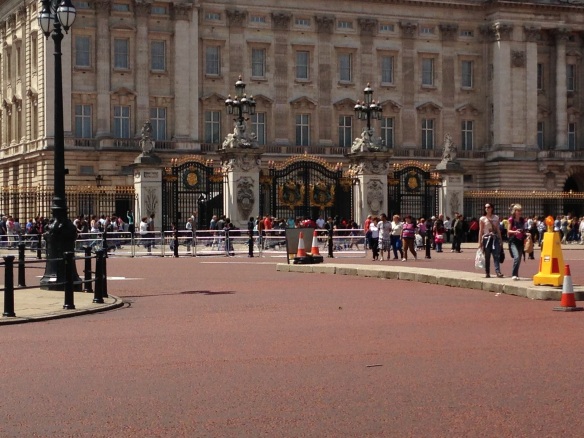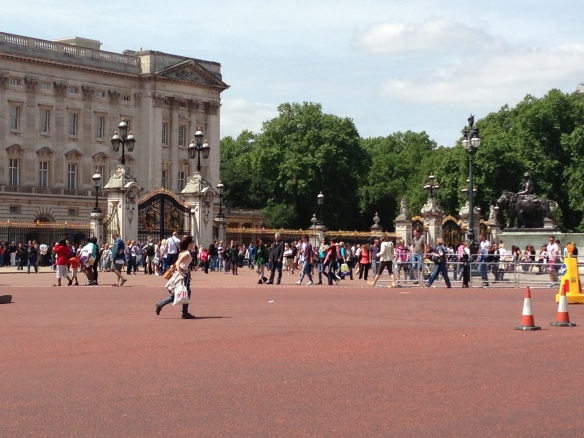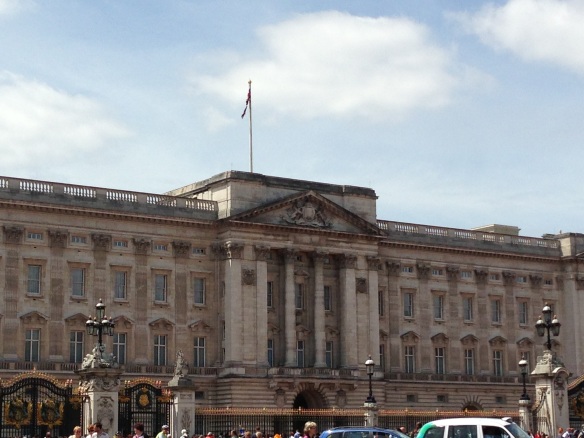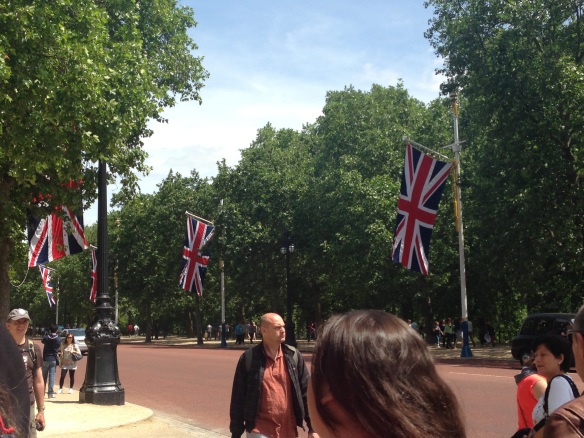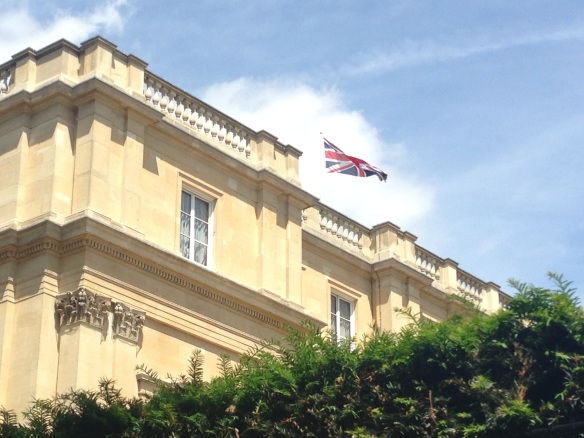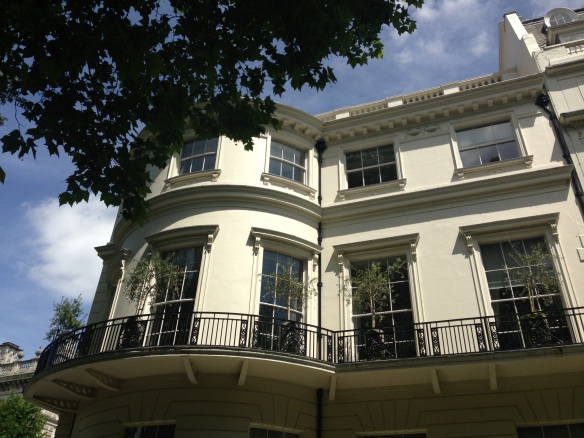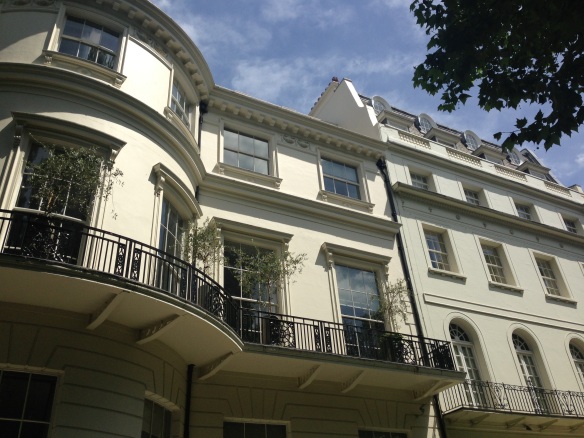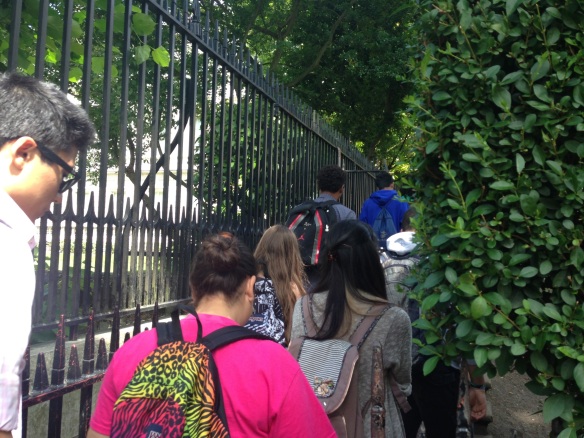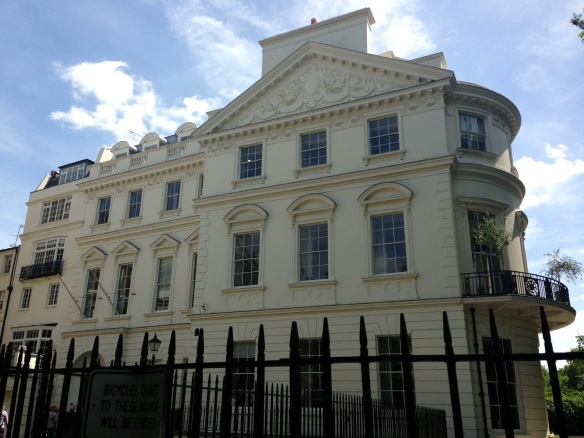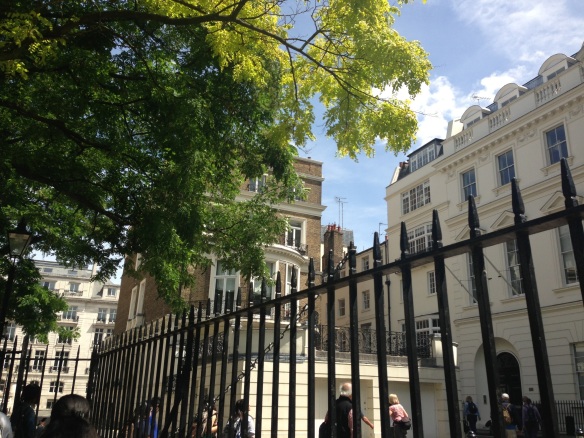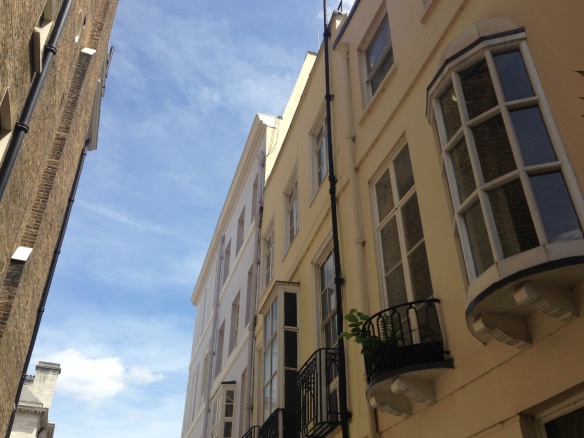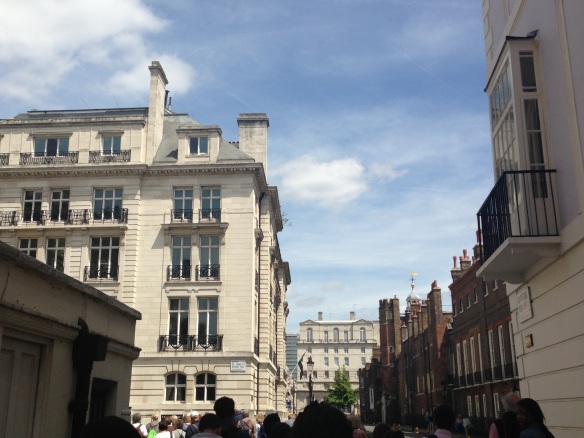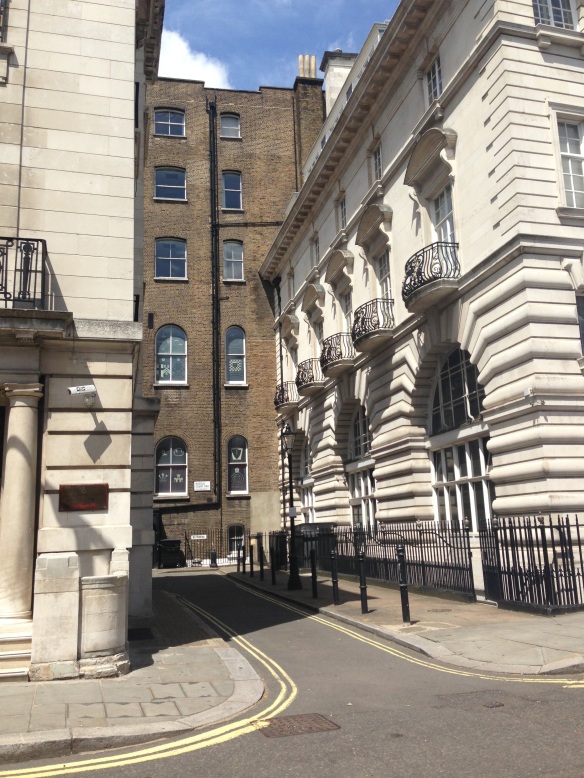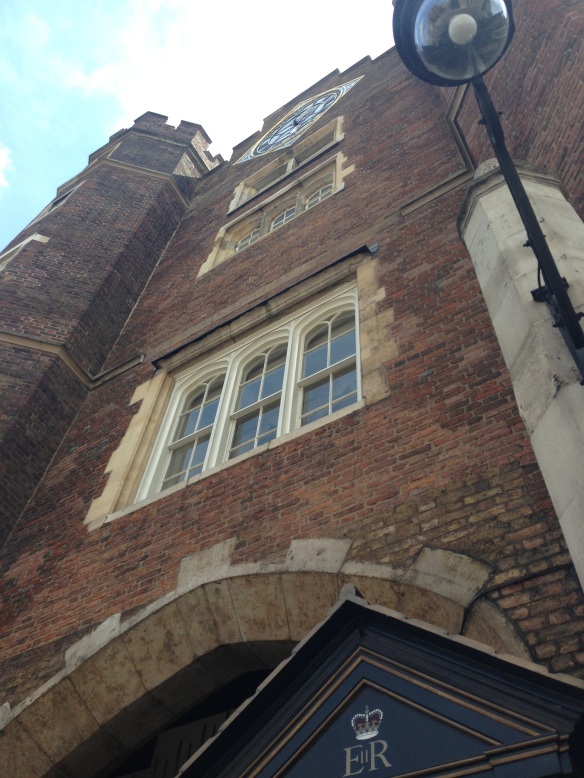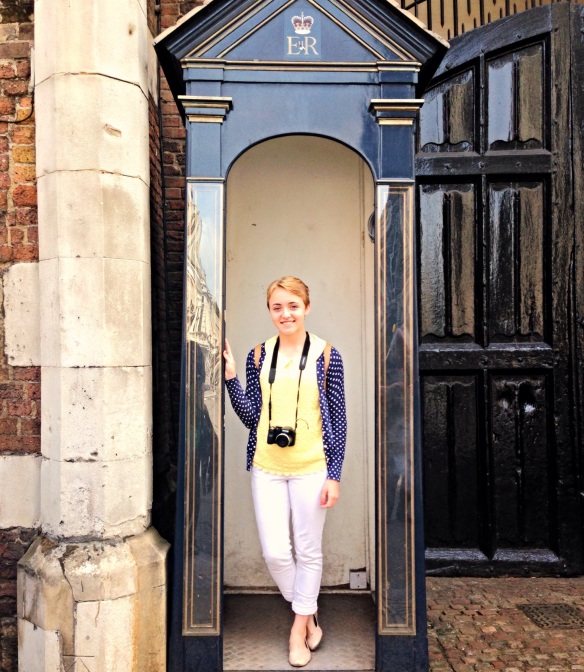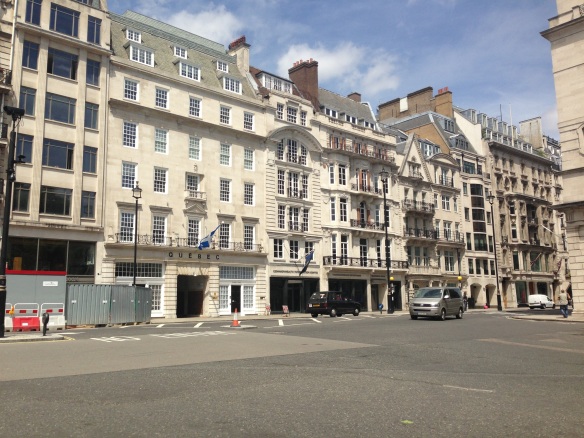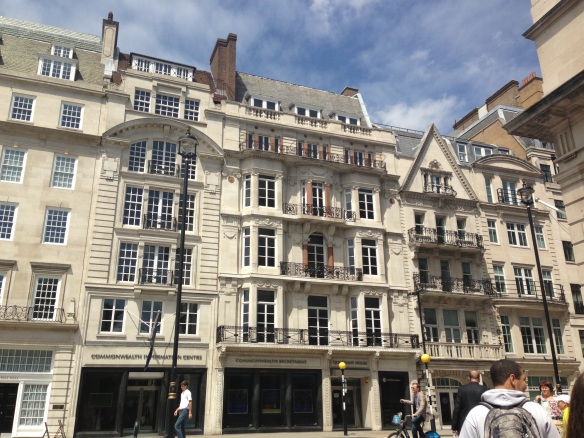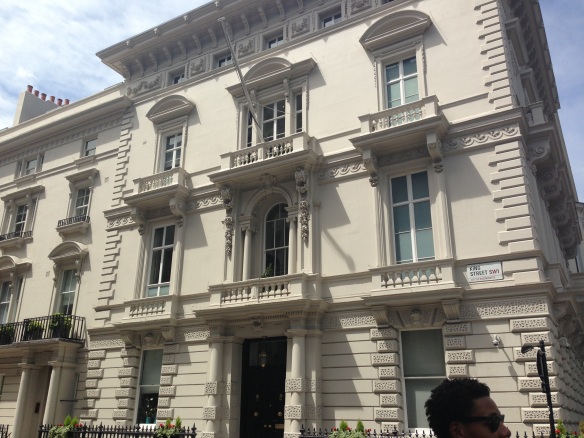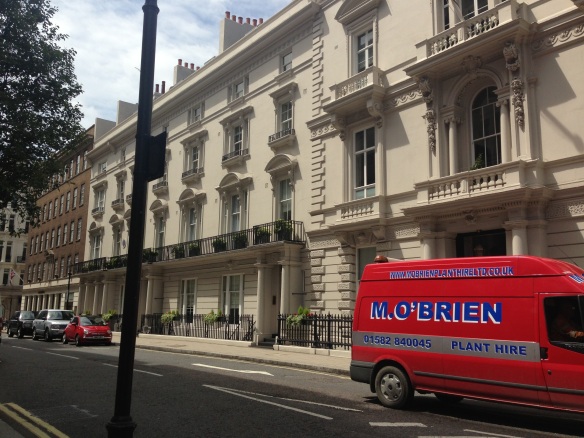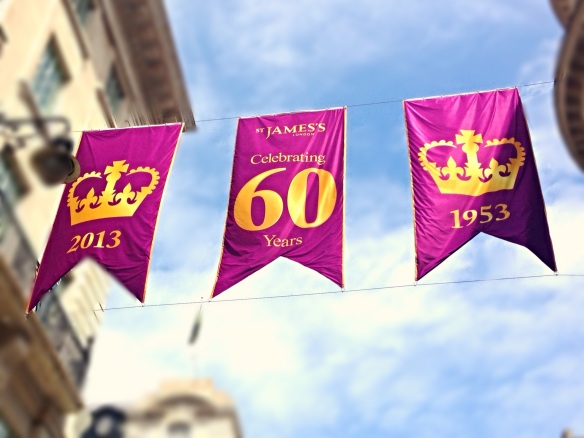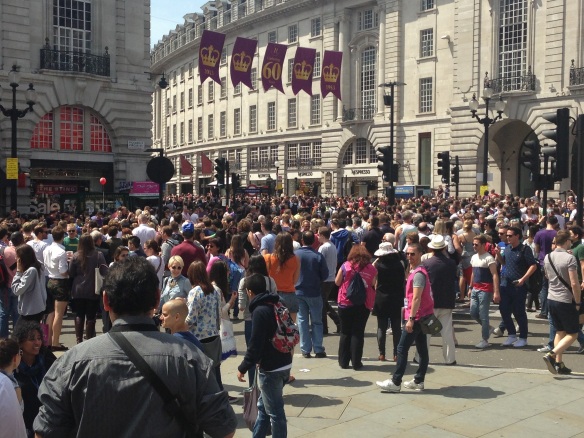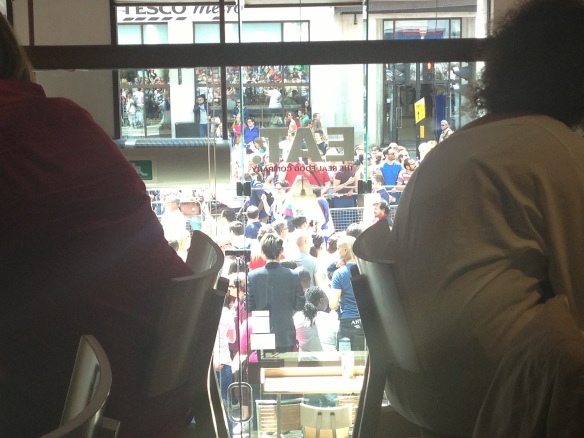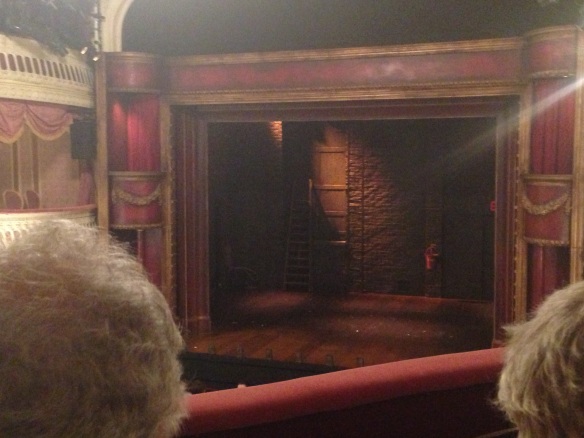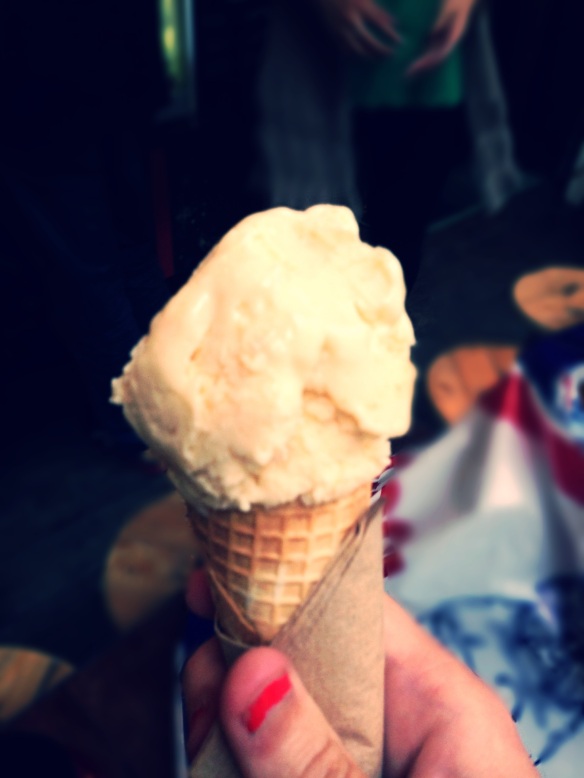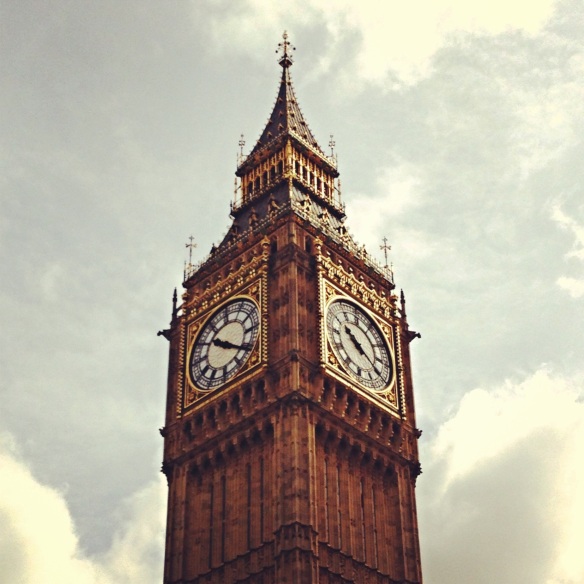Wednesday began with the usual drill. The group then whizzed off to Windsor, along a tree-lined route that made me ache for Charlotte’s own streetside flora and fauna. However, any homesickness was relieved, at least temporarily, upon the sight of the castle erupting into view on my right, as if ripped right from a science-fiction fantasy, or an action-adventure thriller. (For some reason, the exotic growl of a vengeful promise from the lips of one Inigo Montoya came to mind. I remembered my essay, how I’d pictured gallantly eloping to those same rolling hills on some valiant quest, kicking butt and taking names. Windsor Castle encompasses a sense of magic that’s all its own–not only in a high schooler’s personal divulgences, but genuinely, out there in the real world.)
I appreciated the audio touring device we received for free with admission, a small gadget, clipped to a lanyard, that we could plug our earbuds right into. I could listen to a track several times in a row if I wanted something run by me again, a convenience that I took advantage of on several occasions while waiting in line. I mean, queue. While queuing. Right.
The view from the castle of the town was incredible. Miles of the sweeping circumambient terrain was visible: children playing cricket in a schoolyard, double-deckers whirling around bends where vendors had spread their wares, chipped dinghies bobbing languidly on the Thames. You really got the sense of how safe this place would have been during an attack. It’s the ideal location–invaders would both have been spotted long before they neared the walls, and the hill would have exhausted even the most highly trained combatants.
After admiring the vista for a few minutes, we continued on.
One of the first exhibitions was Queen Mary’s Dolls’ House, a project that was actually headed by the granddaughter of Queen Mary (who was married to Henry V), Elizabeth II. The two were very close, so she wanted to give her grandmother a gift that she would cherish, and miniatures were kind of the Queen’s thing. The house was completed in 1924 and features the work of some of the finest architects, designers, craftsmen, and artists of the time, commissioned to incorporate pots and kettles, guns, replicas of famous portraits, books, sofas, the newest gadget on the market: an electric vacuum cleaner. The house is fully furnished, with working electricity. There’s even a fully stocked wine cellar, and a strong room containing miniature Crown Jewels.
The Royal Paintbox, an exhibition of works (including paintings and drawings) by the Royal Family, running now through January 26th of next year, was also source of interest for me. Some of the art was really intriguing, which sort of surprised me. You can’t be royalty and an artist! It’s not fair! But it is, alas, wholly possible… and the diversity of styles was, in itself, really a joy to see. Some of the nobles were more inclined to realism, some to cartooning, but none put exactly the same spin on their subjects. Photography was not permitted, but I’m sure a bit of searching around on the Internet will turn up some finds.
Once the tour was completed, we had lunch down by the river and fed some belligerent swans (there must have been hundreds!) before splitting up and exploring the town on our own. Brandy and I stuck together, stepping into a few touristy shops, and then crossing over the bridge and scavenging around in a (relatively overpriced) antique bookstore, which offered some vintage newspaper comics that I liked. Afterward, Brandy’s hunger led us to a combination cafe and barber shop, where she purchased a lemon pound cake. A significant portion of which somehow ended up in my stomach.
Once the group reconvened, it was time for a ramble around Eton, albeit a guided one. It was actually a private tour, which was cool. Plus, our group is kind of a loud one, so it was really to everyone’s benefit.
I think my favorite thing about Eton (a high school, for anyone else who is as confused as I was! The term “college” doesn’t have the same meaning in the UK as it does in the States) has to be the school uniform. It’s just one of the elements left behind from Eton’s past, and it’s a traditional Victorian getup. (Top hats were also a part of the uniform up until 1948.) Today, the guys have plenty of opportunities to don more casual garb during their free time, but judging by the number of times admin’s offer to alter attire requirements has been declined, they don’t really seem to want to.
One thing the guide made us aware of was just how grueling a day in the life of an Eton student would have been circa the 15th through 19th centuries (the school was founded in 1440 by Henry VI as “the King’s College of Our Lady Eton Beside Windsor”–a name which, being the mouthful it was, many were thrilled to eventually shorten). The boys endured school days twice as long as those typical of today’s students. Younger boys often had to act as servants (then called “fags”) to their older counterparts. All students were served very little food (lots of mutton!), and would beg for leftovers outside of local pubs, and when that didn’t work, they would hide what they could beneath their floorboards, an undertaking that drew hoards of rats and must have seriously deflated the already minimal living conditions of the dorms. Lectures were often so monotonous that they would invent games to play quietly among themselves, like one that was evidenced by a thin channel left carved into one of the antique desks in a surviving classroom we visited: betting on which way and at what speed ink would run when poured from their pens. Today, of course, Eton is much nicer, offering full scholarships to 40 boys a year, single dorms for each student, and about 50 organizations, called societies, at any given time, run exclusively by the students.
Above: What a traditional dorm looked like.
Above: A bronze statue of Henry VI, the founder.
The door where Prince William and Prince Harry, both of whom attended Eton, had their names professionally inscribed.
After the tour, we were all pretty worn out, and headed back to the dorms to sleep until dinner. Definitely one of the most interesting days, however tiring!
